The earth rotates on it’s axis and we are just riding it. It seems to be wobbling a tad bit of late…
A few years ago I added an affirmation that I would live a lifestyle similar to the movie character Carmine Sabitini.
I liked the character, the way he carried himself, his business, the idea of family, and wealth and power.
Here is the part in the movie where the young “freshman” is introduced to Carmine…
The Freshman – Carmine
Know the character. This is what I aspired to manifest.
This is the man who I aspired to become…
He’s [1] a local businessman; [2] an importer involved in [3] international trade.
He’s [4] older. He has [5] a lot of respect.
He’s [6] charming in his own sort of way.
He has a [7] beautiful daughter, that is [8] strong willed, and independent. He also has [9] a network of friends and family.
He is [10] moderately wealthy, and [11] Protected from harm.
Yeah.
So, about a decade ago I added an affirmation along these lines;
I live a life similar to that of Carmine Sabitini in the fictional movie "The Freshman". The emphasis is in his relationships, power, wealth and business.
And then I forgot all about it.
But within a year of my affirmations, I was appointed the GM of an international trade organization, and had a lot of power and various relationships that seem eerie familiar.
Two years later I started my own operations.
Two years after that, I had a head-strong daughter. Indeed, Consider Carmine’s sole daughter…
The Freshman – Clark meets Tina Sabatini
Now, my daughter is only five, but sure as shit, this gal and my daughter have a very similar personality.
And I have even been walking back and forth in my office, just like Carmine, dealing with issues demanding “good news”.
I argue that you must be VERY careful on what you affirm. Be super dooper careful, and if you base your affirmations on a fictional character or lifestyle, you MUST be absolutely specific.
I am living this life now; based on an affirmation guidance-template that uses the movie “The Freshman” as a “seed”. Heads up, I will generate a YouTube or Patron video on this concept in the near future.
Meanwhile, I think that it is supremely instructive to watch the movie and compare it to what I have manifested.
All, in all, I am looking at 80% manifestation exactness on the elements so specified. No joke.
The Freshman | English Full Movie | Comedy Crime
Now, here is the entire and complete movie for your viewing pleasure.
If you want to really get to understand the interactions between affirmation statements and manifestations, then viewing this video will be of great help.
Please take the time to watch it so that you will get a better understanding on the kind of relationships that my affirmations were attempting to manifest.
Today…
Here’s a light-hearted joke that Australians might appreciate:
Why do kangaroos hate rainy days?
Because the kids have to play inside!
BREAKING NEWS: CHINA SENDS PLA TROOPS TO BELARUS – MESSAGE TO NATO
Hal Turner World July 06, 2024
In an utterly stunning development in eastern Europe, China has sent troops from its People’s Liberation Army (PLA) to Belarus, to participate side-by-side with Belarus troops in an “exercise.” – as NATO places 115,000 troops on Belarus’ Border.
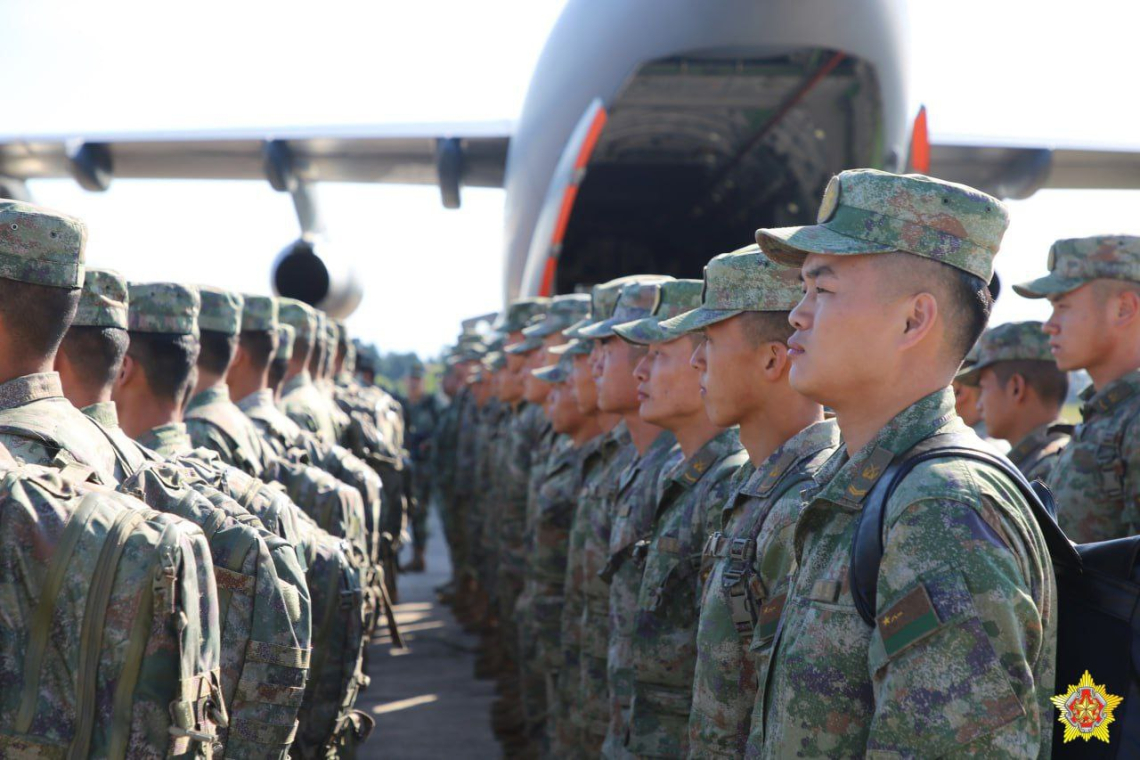
Word of this began to leak out around 5:00 AM eastern US time today (Saturday July 6) when avid air enthusiasts noticed an unidentified plane in Belarus air space. It had begun squawking a Transponder beacon, but was not identifying itself.

The plane landed at a military base in Belarus, and Covert Intel was quickly deployed to take a look. That turned out to be unnecessary because both Belarus and Russia made public the details:
The aircraft was a troop transport/cargo plane from China’s People’s Liberation Army (PLA):

Shortly after it landed, a small contingent of Chinese Army troops de-planed and were greeted with a hearty welcome by Belarus military officers.
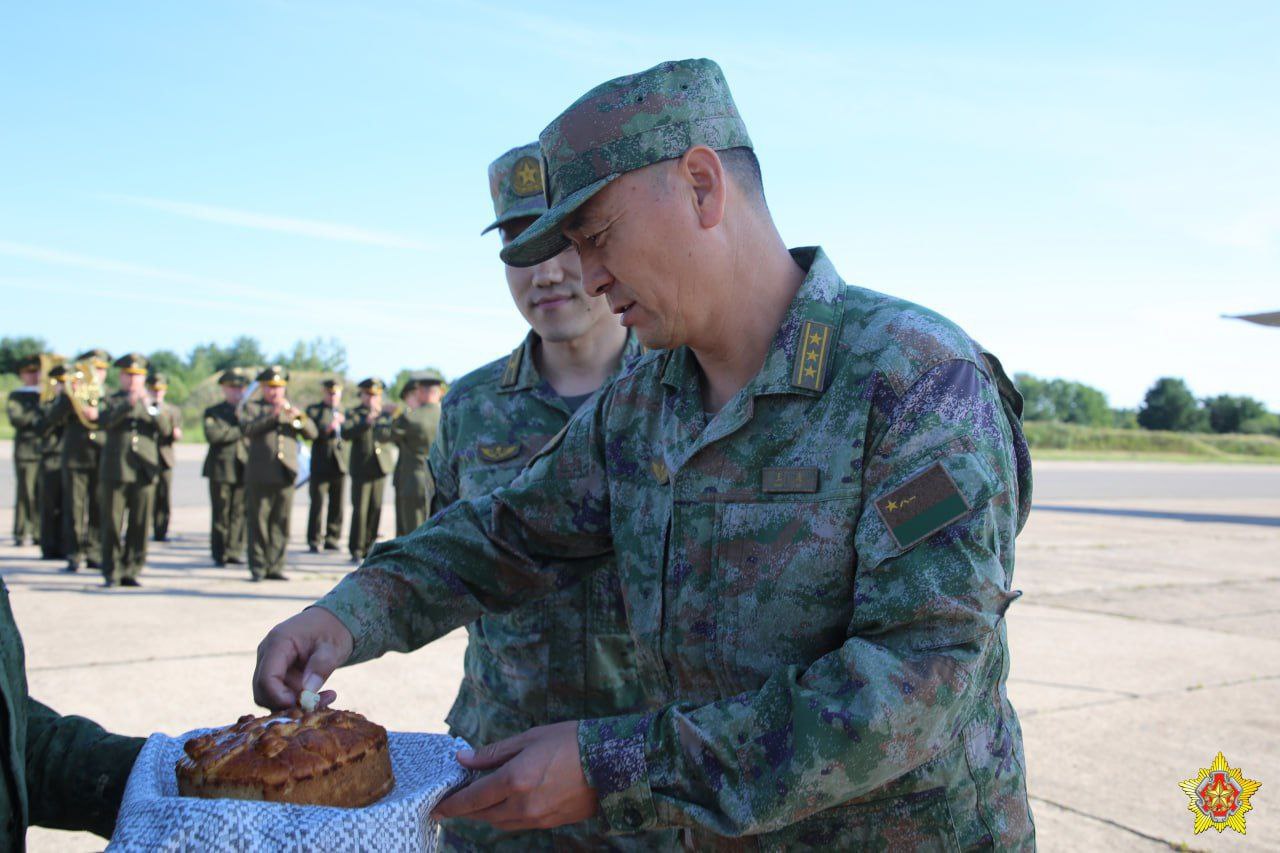
It turns out this is a not-subtle-at-all message to NATO: China backs Belarus and Russia.
It also turns out that this proves interoperability between those forces; something that was not heretofore confirmed by the West.
NATO has positioned about 115,000 troops on the border of Belarus, hoping to force Russia to lock-in-place about 300,000 troops it has on the border of Ukraine.
Now that China has made its entry into the situation, Russia is now free to utilize those 300,000 troops along Ukraine’s border without having to worry that NATO will enter Belarus.
This is a very big change in the balance of power in eastern Europe.
It seems designed to give Pause to NATO and to the West.
Observers say it will either achieve that goal, or perhaps trigger a much worse set of actions by the West.
This is now a tinderbox ready to be ignited by the smallest “spark.”
What are some mind-blowing facts about social psychology?
- Studies have found that humans are attracted to people who resemble us or our parents. Although other studies have found that we find individuals who resemble family members trustworthy not “lustworthy”, fitting with known deficits of sexual attraction to someone related to you.
- Studies have also found that as time goes by, couples in long term relationships eventually look like one another. This is due to mimicking the same facial expressions over time, creating similar wrinkle lines.
- Use mirroring body language when talking to somebody. I’ve used this in interviews and have had great outcomes. Copying someone else’s gestures in a subtle way makes you more understanding and likeable.
- When you shake someone’s hand for the first time, make sure they’re warm. Warm hands mean a warm approach. Not mind-blowing but a useful technique.
- The Bystander Effect. This theory suggests that when an incident occurs, the more people that are present in the accident, the less likely it is for someone to come forward and help. It’s true.
- People follow authoritative figures blindly. A study by Milgram found that people would administer electric shocks on individuals, even if the ‘consequences’ were severe, just because an authoritative figure asked them to.
- Your name is powerful. Using a person’s name upon greeting or in the middle of a conversation means that you recognise their existence. You massage their ego, boosting their self esteem. This one act does them a huge favour.
Col Douglas Macgregor Zelensky Dragging Us in to WWlll
From a pro-‘Merica site.
Burnt Round Steak
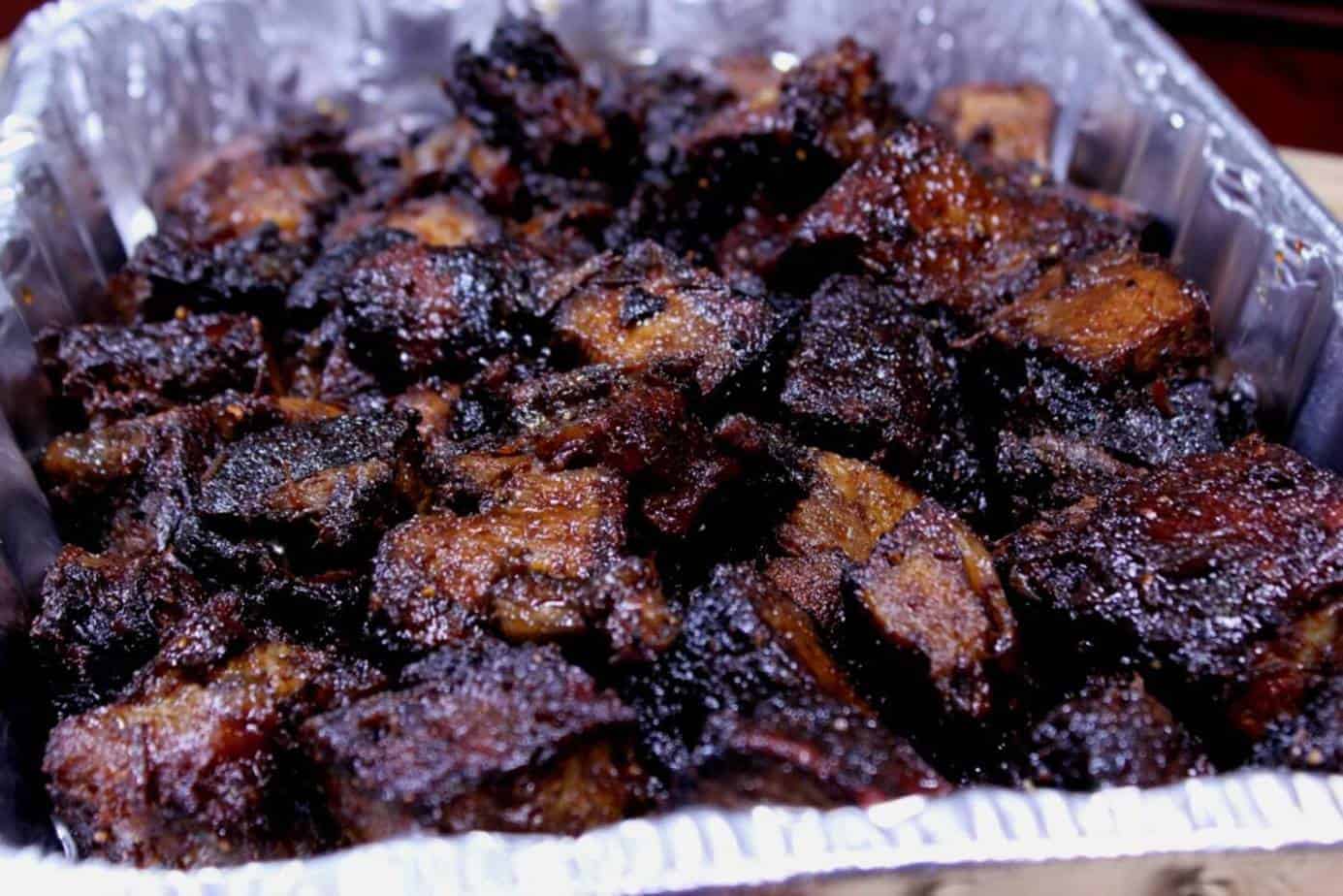
Ingredients
- 1 large round steak, cut into 1/2 inch wide strips
- 1/4 cup Karo syrup
- 1/4 cup vinegar
- 2 tablespoons water
- 1/4 teaspoon Tabasco sauce
- 1 tablespoon lemon juice
- 1/4 teaspoon black pepper
- 1/4 cup Burgundy wine
- 1/4 teaspoon garlic powder
- 1 teaspoon Worcestershire sauce
- 1/2 cup vegetable oil
Instructions
- Mix all ingredients in a glass bowl and marinate meat for at least 1 hour.
- Put meat on campfire forks or on grill and cook over glowing coals until done as desired.
Notes
This is good served with fry bread.
25 Minutes Of Modern Women Having MELTDOWN Because Can’t Get More Child Support
What did you do when you were suddenly fired from a job?
The following might be a bit off topic.
Well, I was not technically “fired” because I already had a job offer in hand.
I was working in a North American MNC and our team project was winding down, and we had to look to others’ projects to clock our hours. Those were the days when we had to log daily how our time was used. It was apparent that the local office was not getting new projects, so I had gone job hunting and got an offer.
I took morning leave to go sign the contract, and was back in office in the afternoon. Had a chance encounter with the team manager. He told me he was going to send me on a short training stint in Australia, and that’s when I asked him not to. Naturally he would ask why, and I decided to tell him that I intended to put in my resignation at the end of the month. I wanted to spare him the embarrassment of putting in the paperwork with HR and then to find out that I would resign afterwards. I thought I was doing him a small favour, although I was going to leave the job.
He then asked if it was a competitor, and I said yes. I was trying to be nice, but realised that I was actually being naive when I look back at this.
Unknown to me, he went to HR. A few hours later, he came to my cubicle and told me that I should put in my resignation there and then, and leave immediately.
Yes, I do understand the fear that I might steal trade secrets or sabotage the work. But I was very disappointed that I had trusted him but he did not trust me.
To add insult to injury, I didn’t get the annual bonus because I had to tender my resignation at the beginning of December and didn’t complete the year of work. Which was the reason that I had wanted to put in my resignation only at the end of the month. These were technicalities, but was a whole month worth of pay.
A few weeks later, a former colleague arranged for a “farewell” lunch. A known less-than-responsible guy tried to upset me and said that because of my departure, everyone got a 10% raise as management was afraid that there would be an exodus. To which I replied, “Good for you. Luckily, I was offered a 20% raise in my new job and didn’t have to wait for somebody to leave.”
After that, I would refuse to go to reunions if either of those guys was attending.
TRICERATOPS – Retro Pulp Science Fiction by Skyward, 16mm, 1962, Film Experimentation, AI Dinosaurs
What is the most badass thing your parent has ever done?
My father did 4 1/2 tours of Vietnam, USMC.
He was an asshole who accepted zero excuses for a failure to do what should have been done.
Mid 1970’s, we’re at the lake on vacation. Dad saw the man in the camper next to ours bail out of the camper, on fire. Flames were rolling out of the camper and the man’s wife was trapped in the rear. The man had set himself on fire trying to get to his wife out. Without saying a word, he grabbed 2 small fire extinguishers that were in our camper, hit the man with one in passing and then ran into a camper that was by then fully engulfed in flames. Lost sight of him immediately after entering due to flames and smoke. Probably 20 seconds later, dad came running out, with the lady thrown over his shoulder and laid her down and then collapsed under a tree. The camper was burnt to the ground within 2 minutes. Dad had some pretty serious burns. The lady he rescued had quite a bit of serious burns. The husband that had come running out on fire died before they could get him to the hospital.
My dad had never talked about his time in Vietnam or even about running into a camper fully on fire. When I came back from Mogadishu, I was having trouble sleeping, angry all the time, and was probably fixing to wind up in prison for numerous bar fights where a couple men had gotten hurt pretty bad. I didn’t have a off switch by then. I was not coping well at all. Me and the old man were drinking a few beers one evening after brutally hot day of working cattle. And the old men started talking to me, not as a father, but as a fellow warrior. He knew exactly what I was going through. He told me that the paticulars of the battle don’t matter. It’s the changes it does to you in your heart and mind that matters. He helped me find the help that I desperately needed. I didn’t know it at the time, didn’t find out till his funeral that he had run into a bunker on fire in Vietnam and pulled one other Marine out.
12 Mistakes That Make Men Look OLD
Commerce Secretary Raimondo said U.S. needs to work with EU to slow China’s innovation rate and need to ‘hold their feet to the fire’.
What do you think of such obvious hegemonic remarks? Does ‘America First’ still play a role in the United States?
Commerce Secretary Raimondo said U.S. needs to work with EU to slow China’s innovation rate and need to ‘hold their feet to the fire’.What do you think of such obvious hegemonic remarks? Does ‘America First’ still play a role in the United States?
Secretary Raimondo doesn’t really matter. The US-China relationship is decided by people above her pay grade. President Biden and his own advisors. The one closest to President Biden is probably Ron Klain, his chief of staff, someone who’s been his confidante since his vice-president days. Mr. Blinken may count as an insider (he’s really a Clinton/Albright man, not in the original Biden team. So an inheritance.). I doubt even Sullivan is that close. The others such as Tai and Raimondo, these are just “they came highly recommended by friend’-sort of office holders.
Mrs. Raimondo didn’t even endorse Mr. Biden in his presidential bid. She endorsed the billionnaire Mr. Bloomberg instead. These are East Coast “Wall Street democrats” – tax-cut, de-regulation, but also willing to spend tax dollars on (some) welfare and (some) education. When Mr. Biden got elected, he needed to get the support of Wall Street Democrats. So he offered HHS (Health and Human Services) Secretary to Mrs. Raimondo. She said no. Not interested in this thankless job with Covid raging. She wanted Commerce instead.
In the end it was Ron Klain who dived head-long into the nightmare logistics of the vaccine rollout, and did a good job of it too. And didn’t make himself the news. That’s what a president’s confidante should look like. Mrs. Raimondo, she’s many things but not a Biden Confidante.
Now that you know Mrs. Raimondo sits at the peripheral of the Biden Circle, you can see that what she says doesn’t matter. (She has a hawkish language, which probably more a reflection of her own closeness with Senator Reed, who’s the Chairman of the Senate Arms Services Comm. and a childhood friend since forever. Not a “pope” yet but definitely a ranking “cardinal” in the Senate.) What she is tasked to do, that will reflect some pieces of what the Biden team is thinking. It’s unlikely that they’ve thought about this issue a lot, with the White House so deeply buried in the budget and the stimulus fight with the Congress.
But they would know much more than the general public opinion about the realities of US-China relationship. If the ordinary people are at ground zero in terms of understanding, the politicians are probably at level 1, the trade and finance guys probably at level 2, and the WH probably at level 3.
For example, there are a ton of questions right here on Quora about the Chinese real estate company Evergrande. Questions like “would it trigger China collapse”. These people have no idea that it’s the Chinese government who stopped Evergrande from being able to raise money domestically, so they turned to issuing dollar-bond. In case of default, the government gets all the land and the assets, China policy banks hold the most senior debt. Chinese investors hold second-senior debt. Foreign dollar-bond investors hold the most junior debt, so they have to bear all the loss. Then you see a bunch of rednecks cheering it on while Tony Blinken called up the Chinese to say “could you please please be gentle with Evergrande”. China will tell him to go f*ck off but at least Blinken knows who’s gonna really be screwed. The general public, and all these “financial reporters”, they don’t even know how to read a bond seniority table, and with their very limited intelligence and knowledge, they want to set international policy!
The big picture is that the previous Administration had turned a largely win-win relationship into a lose-lose relationship, and Mr. Biden has come to the realization that “if for every $1 you lose, I’m losing $2 or more, then we may be both screwed but I get screwed even more. So can I figure out a way to stop the bleed, hopefully without rolling back everything, ’cause we’d look really stupid if we have to do that.”
Before the trade war, essentially the US makes the wheel, China makes the sofa. Put it on top, and you have a car to drive around. Then the trade war started, and the US took the wheel and put a trade sanction on it – which of course made China go into a frenzy of re-inventing the wheel.
The “China can’t innovate” is a stupid meme advanced by third-rate wanna-be politicians, such as HP’s Carly Fiorina when she wanted to run for the Senate in 2010. A people who launched nuclear bombs and communications satellites with only pencil-and-paper, literally, can not be very stupid, can they. It’s just that the notable Chinese inventions, such as cheap Malaria drug or salt-tolerant rice, these are really not “a thing” to rich people. In reality you invent things to improve your own lives, thus China wants to do shared bicycles and the US wants to do space tourism. One targets $2000 annual income people, the other $20,000,000 annual income people. Different market segments.
So this idea that by sanctioning China, these manufacturing jobs will come back to the US, is completely insane! Have you looked at how much these jobs are paid in China vs. the US? They will not “go back to the US”, unless the US becomes as poor as China.
The Wall Street actually figured out a good way to share the profit of China’s growth – by investing in it and get a share of the profit. There was China-bashing but that was mostly for two things – one is Pentagon budget, the other is some special favor for their pet industry from China.
When the trade war started, a lot of these American industries basically did a calculation – Trump is an idiot but maybe he can really squeeze something to my benefit? If it doesn’t work, then it’s all Trump’s fault and I can go back to the way we work with my Chinese partners before. Well, the problem with these cost-benefit analyses is that these things fundamentally is about what you think, not about the reality, and the reality tends to work differently! Turned out most suppliers still want the work. Distributors, not so much.
What about fixing the uneven distribution of the benefit of trade that created the army of Trump voters? No, of course, not. Don’t even think about it. I paid the lobbyists to make deals that are good for me and bad for you, fair-and-square! No way I’m sharing the upside! Let’s just all blame foreigners and poor people.
(PS: International trade deals creates winners and losers even though the sum total might be advantageous. The way to mitigate this uneven distribution is through internal fiscal transfer or domestic economic policy. Failure to mitigate will exacerbate inequality and make domestic politics volatile. )
So here we are, 3 years after the trade war and tech embargo, with the highest ever trade deficit, growing inflation, and a China who is now absolutely determined to de-couple technologically from the US. Mr. Biden is trying to stop the loss, and Mrs. Raimondo is sent out to see if our “allies” can share the loss, instead of making bank from it. Under the shadow of climate emergency and the extraordinary inequality. This hole we are in is so deep, nobody knows how to climb out of it. And the most idiotic and crazy of them yells the loudest!
Coup attempt in Bolivia fails as president urges people to mobilize against democracy threat
Here’s a light-hearted joke involving Americans and Irish stew:
Why did the American try to make Irish stew?
Because he wanted to see what all the “stew-pendous” fuss was about!
Shorpy
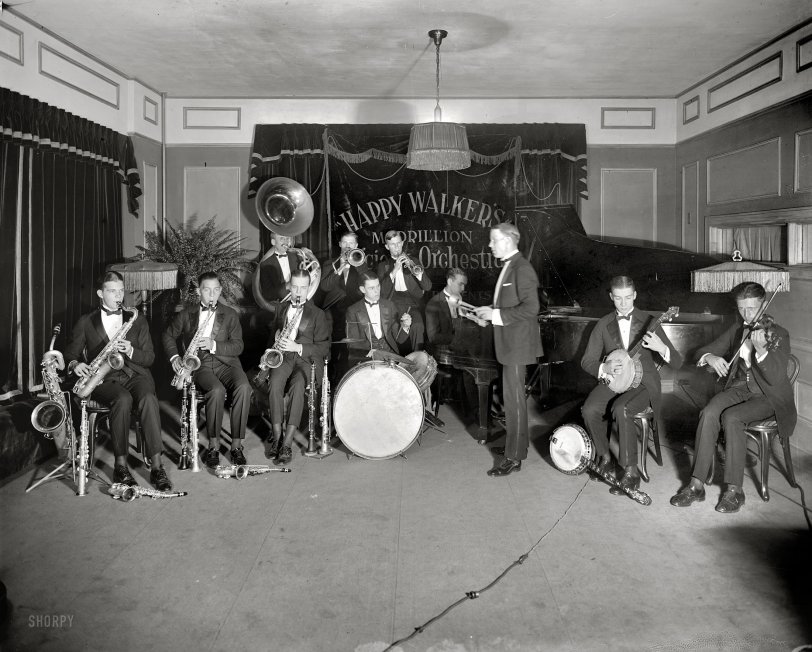
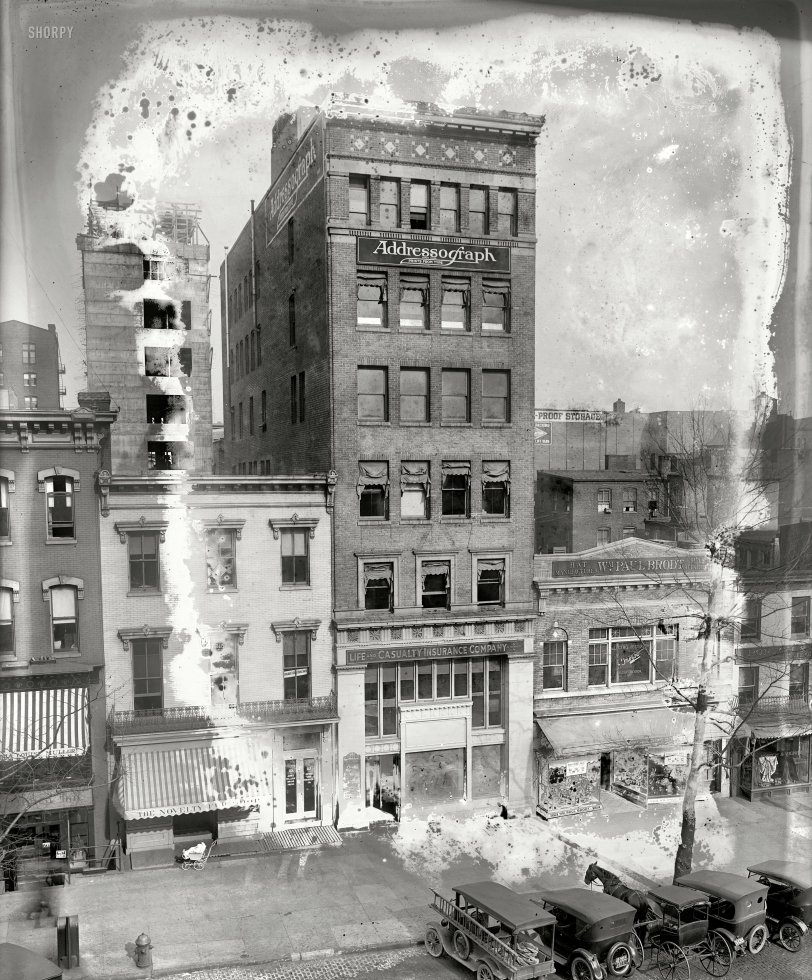





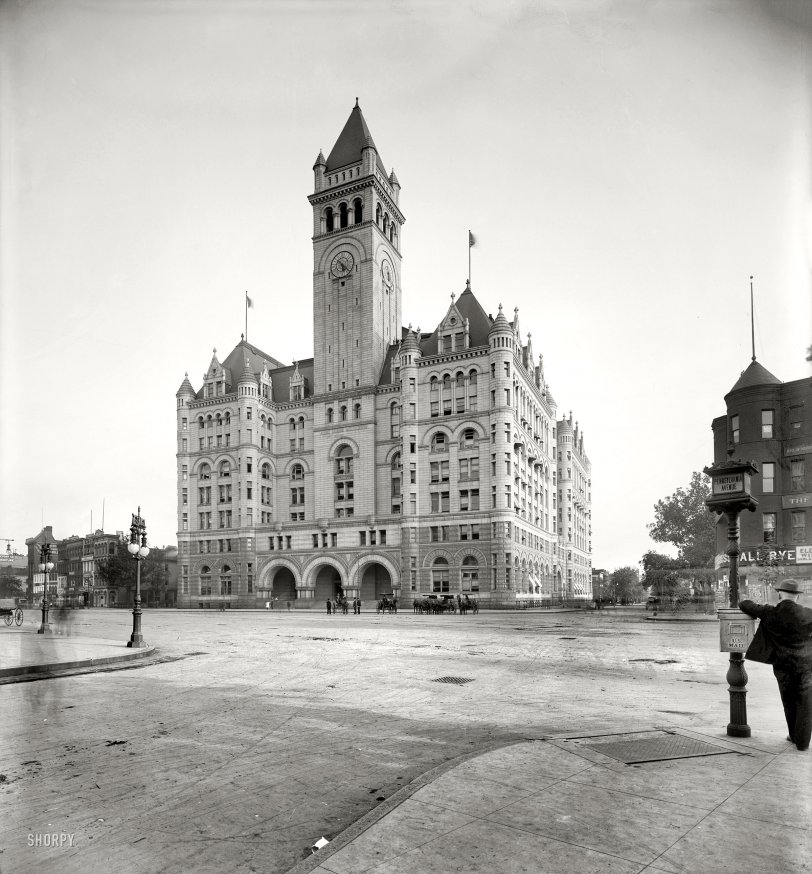






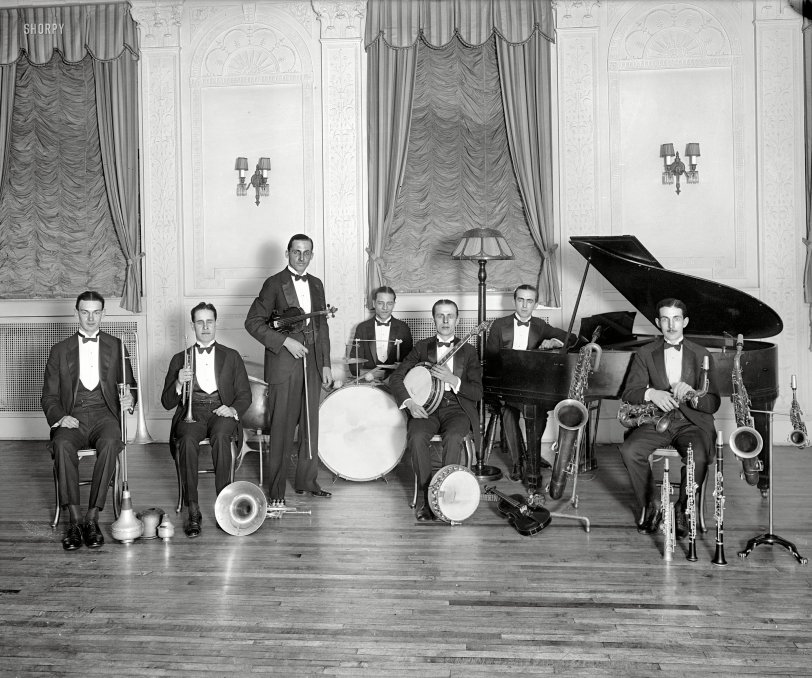
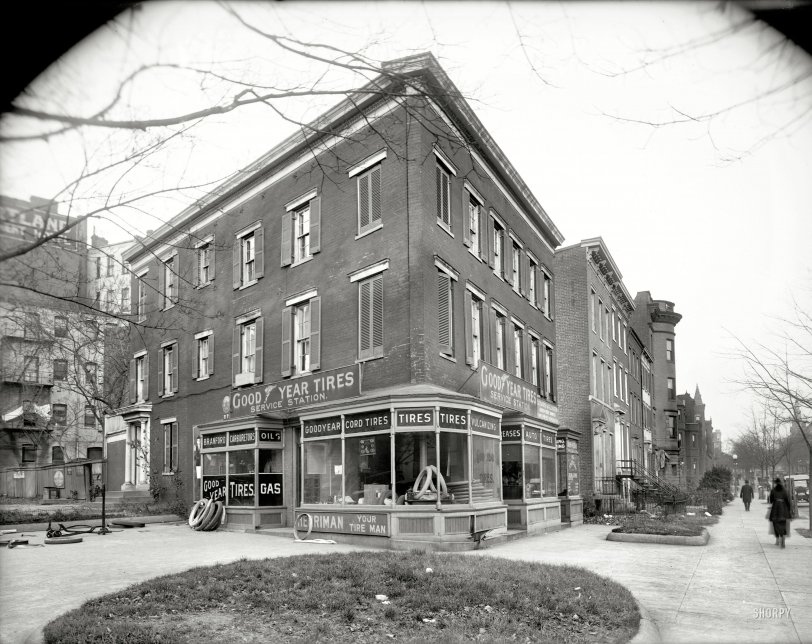
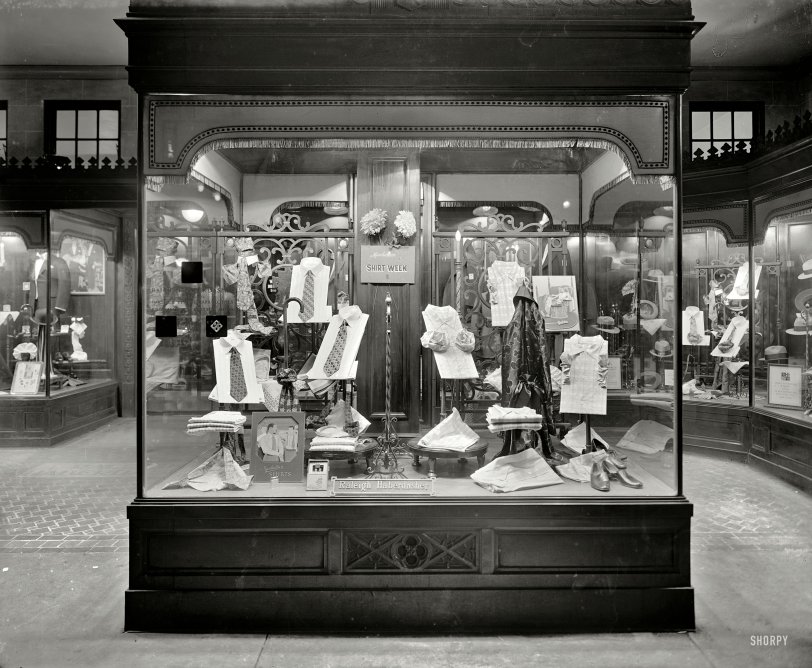

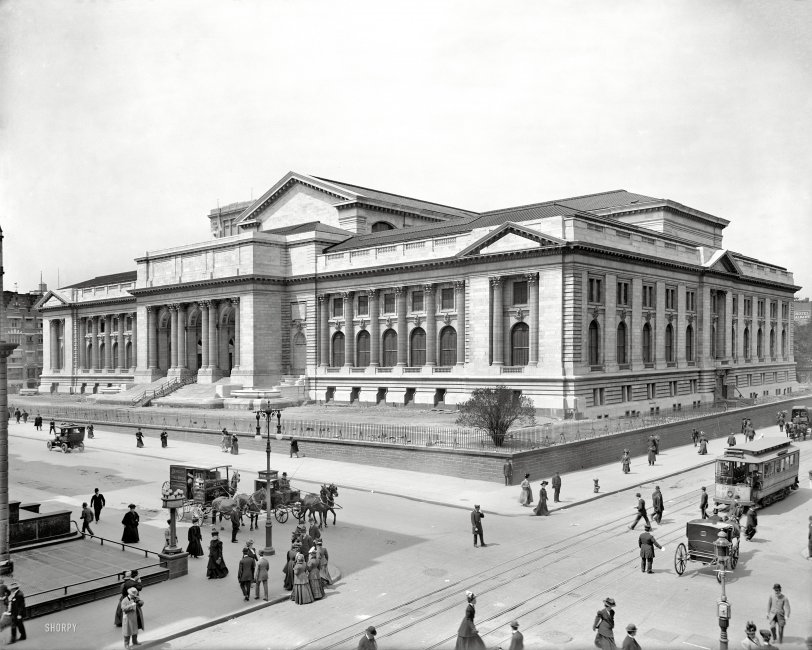

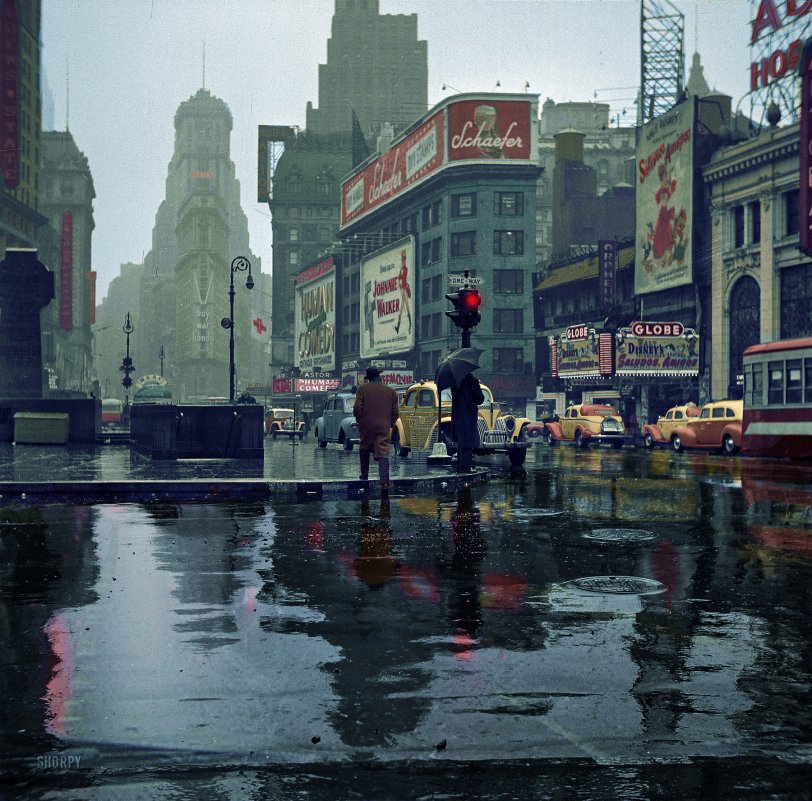



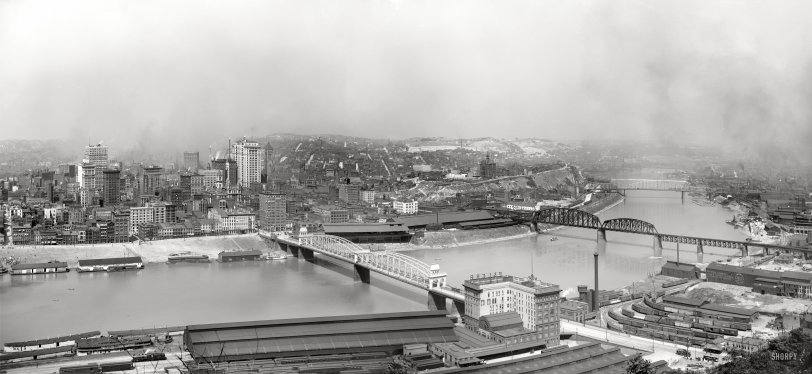
Toilet paper drama
Finding love in space
Submitted into Contest #8 in response to: Write a story about an adventure in space. … view prompt
Tea Kleva
During our flight back we hit another spaceship. The alarm went off and I was panicking. Caroline took my hand and told me everything is going to be okay. We landed on the Moon and Caroline had the idea that we could go on an adventure, so she took my hand and we ran on the other side of the Moon. We found a cave and we went inside. It was dark, but fortunately I had my battery with me. The cave was white, the walls had different shapes and the echo was amazing. We started singing and the walls sang back. I never wanted to leave this place. We went deeper in the cave and found a waterfall. I remembered that we learned a lot of this cave in the school. The water was magical. If you dive in it and think of some place, you would get there through this waterfall. I was so curious if this really worked, so I proposed to Caroline that we dive in the water and travel on the Earth.
We got in the water and thought of some place on Earth. Suddenly I remembered that Eart was a big place and that we wouldn’t land in the same place, but it was to late. There was a flash of light so I closed my eyes and I could feel my body flying through the space. I landed in front of Big Ben. I was in London. I didn’t have any device to communicate with Caroline and even if I was among the people, I felt alone.
Right now I just wanted to find Caroline and go back to Venus, where I could perhaps marry her and be with her forever. I know that we didn’t know each other enough, but my gut is telling me that she could be the one.
I just stopped for a minute and closed my eyes. I wanted to see if I could feel where she was. I heard music in the distance and someone was calling my name. I turned around and opened my eyes. Some kind of shadow ran into the bar where the music came from. I followed the shadow and I saw a girl who had same hair as Caroline. That must be her! I found her! I went to the girl and hugged her.
“I finally found you!” I said. I let go of the hug and the girl turned around. It wasn’t Caroline. I felt so embarrassed and I left the bar. I started crying because I thought I would never find Caroline. I sat on the stairs outside the bar and I couldn’t stop crying. After I stopped crying I looked on the floor and my tears spelled Paris. I stood up and went to the airport. I had some money with me so I bought a ticket for Paris.
I searched whole Paris just to find Caroline, but I couldn’t find her. I stopped in front of Eiffel tower and started praying that someone could give me a sign or some kind of help, so I could find her.
“Hello miss, do you want to see how beautiful Paris is from the top of Eiffel tower?” some man said.
I bought a ticket to visit the top of the tower. I stopped for a moment to enjoy the view, when someone grabbed my shoulders. I turned around and there she was, Caroline. We found each other, fate wanted to reunite us in the city of love, Paris. We hugged and I just couldn’t let her go. I didn’t want to lose her again.
“Now that we found each other again, we should go home.” She whispered in my ear.
“But home is wherever we are together. So right now we could stay in Paris and then we could explore the rest of the World.” I said with a tear sliding down my cheek.
So we decided to stay on Earth. The only thing we needed at the moment were each other and the desire for travelling.
After 5 years we travelled the whole world, so we decided to go back on Venus. Me and Caroline live in the house we build together. We love each other and want to grow old together.
Sometimes your soulmate come to your life when you least expect it and sometimes it’s not the person you would expect, but that’s the beauty of life, it’s unpredictable.
So Much
What is the cheapest thing you’ve seen a mega-rich person do?
Few years ago, my uncle, a heart surgeon, was ordering a coffee in a luxury and very expensive restaurant: the cashier turned out to be the owner of the business. While the restaurant is one of the most famous of my city, that man is the owner of a company that owns, along with that restaurant, many other luxury shops, cafeterias, food stores etc etc: that company has a profit of about 30–40 million euros a year.
So, my uncle took the coffee and was about to pay when the owner had a heart attack, and my uncle provided him first aid and eventually managed to take him to the nearest hospital and save his life.
After a month, my uncle, as he used to do almost every week end, goes to take a coffee in that restaurant when he sees the owner for the first time since that accident . The owner warmly greets my uncle and then … here comes the plot twist … tells him (not jokingly) “hey, last time we met, you forgot to pay your coffee”.
My uncle paid for his coffee and never set foot in that place again.
YOU NEED TO OUTWORK EVERYONE – Motivational Speech
What was Turkey’s stance during WW2 when Germany was near their borders?
Nervous. Very, very nervous.
By 1941, Turkey was in an extremely tenuous position. The Soviet Union, our old friends during our War of Independence, had reversed course under Stalin and had begun to eye not only the old Imperial territories in Turkish east that were conclusively lost with the Treaty of Kars, but also the Straits themselves. On the other hand, there stood Germany across the border- a state with which we ostensibly had friendly enough relations, but the aims of the Reich were hard to know. Further complicating things, Britain was prodding us to see if we’d enter the war on the Allied side, and while Britain didn’t exactly have the power to force us, this put us in the crosshairs of a Reich that might decide that it’d be better off eliminating the threat before it struck at an unopportune time. And of course, even if Germany didn’t desire to attack us, that still left the question of Mussolini’s Italy hanging: after all, Germany hadn’t wanted to attack Greece either.
Still fighting to climb out of the ruin that the Great War and the struggle for freedom afterwards had left us in, we couldn’t afford another war, nor did we want one. This left the razor sharp path of strict neutrality for us to follow, while arming ourselves to the teeth so we could sell ourselves dearly when the time came.
Throughout the Second World War, Turkey was one step short of a state of war. Air raids shelters designated across the country, rationing and blackouts instituted, courses to train citizens on the realities of warfare set up, and the army and the economy mobilized for wartime, Turkey was bracing for a war that might have been right at the door, intending to sell our lives dearly if it came to it.
By 1943, the Turkish army had expanded to forty-five divisions(including one armored division) and five brigades(one cavalry, one armored and three infantry), organized into three armies and fifteen corps, totaling 1.3 million men under arms- two thirds of all people eligible for military service.
Soviet-produced T-26 tanks during a parade before the Second World War. These vehicles bought in 1932 was the first sizeable tank force of the Turkish army. By 1945, Turkish armed forces would have a rather sizeable tank arm consisting of an utter hodgepodge of vehicles, ranging from Soviet T-26’s, British Vickers Mark 6’s and Valentines, German Panzer III and IV’s, and American Stuarts and Shermans.
Turkey’s Second World War policy can be described tongue in cheek as putting all effort towards being a friendly, but extremely spiky hedgehog. It was centered simultaneously on maintaining friendly neutrality with everyone around us, while being as ready as humanly possible for any war that might come our way.
High-Value Man TRIGGERED American Women After He Told Them They Aren’t Wife Material
What is the saddest thing you’ve ever seen as a police officer?
I’ve seen a lot of really sad things, way too many than I care to recall. But here’s just one sad story of many.
A Husband and Wife were having a Birthday party for their daughter. She was little, maybe 4 to 6. I don’t remember exactly how old she was. The mother and daughter and guests were all playing, and eating cake in the living room of their 8th floor apartment. The father had been recently receiving treatment for depression, and went into the kitchen and decided to jump out of the window, to his death.
The Mother didn’t notice, until we came up to the apartment and knocked on the door. I saw what was going on, and called her out of the apartment into the hallway. I explained everything that just happened to her, and yes, I didn’t follow protocol and have her make a formal ID of his body. Yes, I did it differently. A picture, the doorman, and his ID, were good enough for me. There’s no way I was going to put this poor woman through any more stress.
She asked me about what she should do? How could the situation be handled? I still don’t know if I gave her the right advice. I was a 28 y/o, I wasn’t married, and had no children. I told her to lie to her daughter for now. Not to tell her that her Daddy had died on her birthday by jumping out the window and committing suicide.
I told her I’d help call the guests’ parents, and have their kids picked up from the party. Then maybe she could tell her daughter that her Daddy wasn’t feeling too well, and went to the hospital. Maybe in the next day or two, she could tell her that her Daddy had died in the hospital of a heart attack.
Then, when the child was older she could tell her the truth, since family secrets always wind up coming out, anyway.
I’m not one for lying to people but I just thought that she would always associate her birthday with her father’s death, and that just wasn’t fair for this little girl. Unfortunately, death by suicide is still mostly taboo, even in big cities. She and her Mother deserved so much better than the hand they were dealt that day. I still don’t know if this was the right advice, but this is what I would have done for my child, if I’d had one.
Election In Britain
The Tories have lost the election in Britain.
Labour, under Keir Stamer, did not win the election. It received less votes than it had received under Jeremy Corbyn in 2017 and 2019.
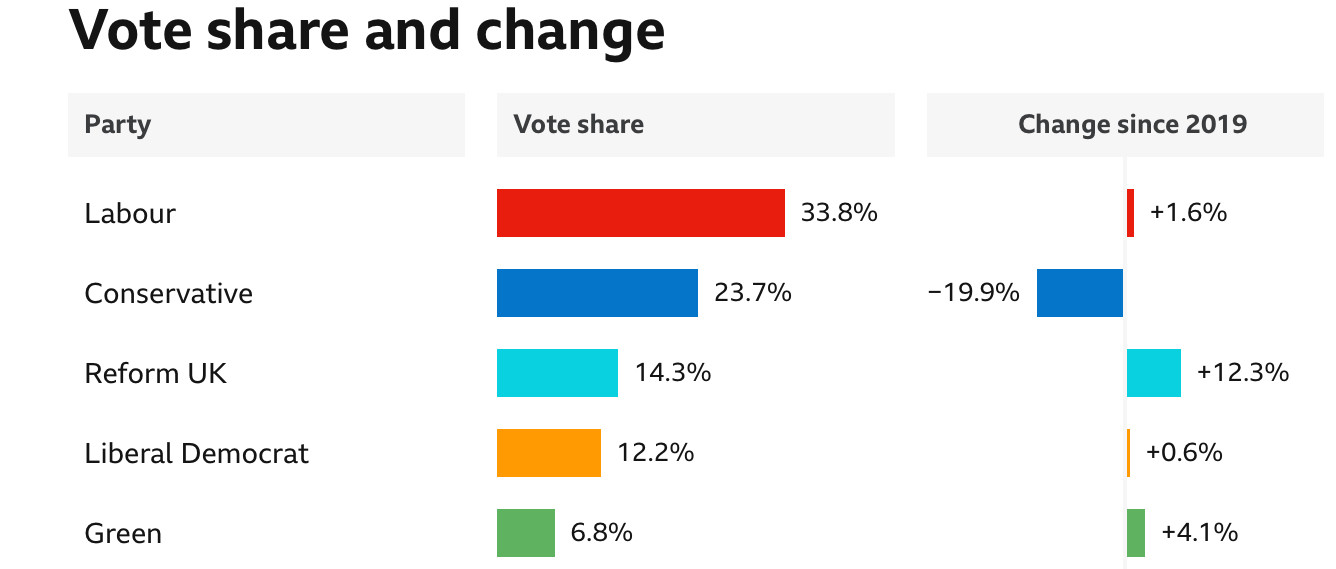
Labour, under Corbyn, had been a real worker party with socialist tendencies.
The deep state, with the help of the Israeli embassy, had launched a media campaign against Labour alleging that it was hiding anti-semitic tendencies. Corbyn made the huge mistake of not fighting back against it. In the end he was kicked out despite Labour’s healthy election results.
Jeremy Corby, no longer in Labour, has been reelected. So have been five MPs who campaigned on a pro-Gaza position.
Stamer is a controversial figure. He seems to have been placed in his position by the deep state. His previous position was the Chief of the Crown Prosecution Service. He had a major role in indicting and incarcerating Julian Assange.
After being installed he has moved Labour to the right. It is now occupying a pro-capitalism center-right position:
“What Keir has done is taken all the left out of the Labour Party,” billionaire businessman John Caudwell, previously a big Tory donor, told the BBC. “He’s come out with a brilliant set of values and principles and ways of growing Britain in complete alignment with my views as a commercial capitalist.”The Labour Party highlighted his endorsement.
Stamer will hurt the British public more than the Tory did under Sunak.
There will soon be an uproar against him.
I do note expect him to survive for long.
To Smear China, the US Stabbed the Philippines in the Back
What did your parents do to you that broke your heart?
I was blessed with having great parents, but this is how they broke my heart…
My parents had me quite late. My mom was nearly 40 when she fell pregnant with me. I was their baby. Some of my half brothers and sisters had moved out already, when I arrived.
This made me much closer to my parents than any of the others. By the time I came around, they had both become more patient, less worried about making mistakes, way more relaxed and our relationship showed that.
But they were also much older than most of my friends’ parents. When my friends were relying on their parents to lend them money, mine were retiring and due to some issues with their retirement fund, there was no money for them to relax and enjoy their golden years.
Luckily, I had already started on my way to a successful career in software development, so I was fully prepared to support them, rather than the other way around.
For the last 10 years or more I have been asking them to live with me. Every time I asked they had some excuse that they couldn’t(or wouldn’t). For years I have been planning all the time we could spend together, but nothing I did would make them budge.
Then, 4 or 5 years ago, Dad had a stroke. He went from healthy active 75 year old, to a bedridden, confused, (sometimes) aggressive man-child. He refused any attempt at physiotherapy and declined steadily from then on.
Mom was a trooper. She looked after Dad to the best of her abilities, but she was well into her seventies too, so it wasn’t easy. I stepped up my attempts to get them to move in with me. They needed my help more than ever, but they were determined to stay in their own home.
Then, this year in February, Dad got sick. Some sort of stomach bug. Mom was exhausted (I mean, more so than usual). I tried to get an organisation to take over caring for my father at home, to give mom a break, especially since the illness meant so much more work for Mom. Every one I contacted were unable to help, because my parents lived too far away from the city. They were happy to help us if my folks moved to my house, but no one was willing to travel that far daily.
Eventually, on the 7th of February, Mom agreed. She and Dad would move in at the end of the month. After 10 years of me begging, they finally agreed. I was over the moon.
The next morning I got a panicky phone call from her just before 5:00 am. “Melanie, your dad isn’t moving. I think he’s dead.”
Dad had passed away peacefully in his sleep. Heart break #1. He may not have been 100% himself, but he was still my dad, and I could still see glimpses of who he used to be.
But at least Mom was coming to live with me. I moved Mom in the day after Dad’s funeral. It may have been too late to spend time with Dad, but I wasn’t going to waste a minute with Mom.
But when she moved in, something was wrong. She had no energy. Way less than ever before. I knew she had emphysema, but she had oxygen and I got her a shoprider. I was prepared to do whatever I had to make Mom’s last years as enjoyable as possible. Nothing seemed to work though. Mom’s health was declining so fast, and I was in denial.
On the 23rd of April, she was admitted to hospital. On the 26th of April, again, just before 5:00 am, I received a phone call. This time from a nurse to say that Mom had passed away during the night. Heartbreak #2.
She lived with me for 68 days. After I begged her to live with me for years. All the thing I had planned for us. All the places we could go. She spent 68 days with me, before she passed away. I know I should feel grateful that I got at least 68 days, but somehow, right now, I don’t feel grateful at all. I just miss her and want to get all that time back.
I often wonder if people in the US and China understand what it means to use a nuclear weapon.
Yes, China can destroy the US. My hope is that this essay will give the reader an idea of what that is like. Targeting each other’s population is what deterrence is all about.
I grew up during the Cold War. We did civil defense drills in school once a month. This meant old fashioned air raid sirens warning us of impending doom. The teacher closed lead-lined asbestos curtains called flash curtains in each classroom. The students squatted under our desks. We knew we had less than a minute before impact when the air raid sirens emitted a wavering tone. Such a thing would not have saved me because my school was only a few miles from an important Air Force base. The purpose of the exercise was only to provide morale to a population under threat of annihilation.
No one really knows what can happen in an attack or what China will do. This is my educated guess; an imagining. Let’s suppose a single missile, a DF-41 with 10 x 150 kt MIRV bracketing the Newark-New York-Jersey metropolitan area. Let’s think about what this small attack does before we decide what the two brigades of DF-41 displayed in China’s military parade can do. Let us also suppose the US does not retaliate and total war does not ensue. The one missile destroys the United States. It takes a couple of years but the wound festers and takes the country down.
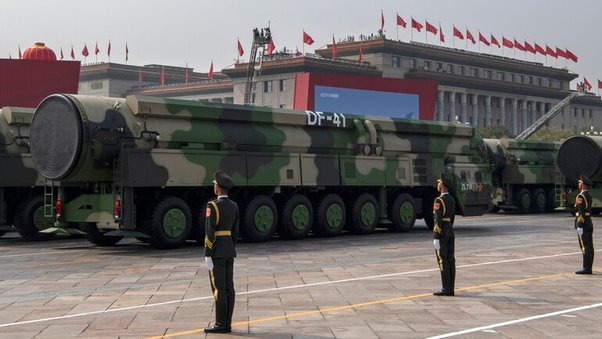
Figure 1. Sixteen DF-41 launchers on display in China’s military parade. China conducted 7 test launches so far of the DF-41.
First, a little about the DF-41, China’s most modern intercontinental ballistic missile. The DF-41 is the most advanced ICBM in the world, carrying up to 12 MIRV per missile to a target of 15,000 km. It is similar to the Russian RS24-YARS, a MIRV’d Topol-M but has longer range, more warheads, and is extremely accurate with or without GPS. Launched from 9,300 miles away, the missile can hit within an area the size of a football field. The DF-21 launches from the back of a truck. Time from a launch near Mongolia to arrival in the New York area is 21 minutes.
The DF-41 warheads are very similar to the US W-88 having a yield that is selectable between 20 kt and 150 kt. The MIRV vehicles are designed to penetrate the US missile defense system which means they may actually be MARV.
I used an online tool to make the following map.

Figure 2. Simulated attack on the Newark-New York with 8 150 kt surface blasts and two air bursts all from one ICBM. The large orange rings around the impact zones are everything on fire, the gray areas are overpressure that breaks windows, roof, doors, etc. The green rings are everyone dies there within 24 hours from radiation never mind the fire, the inner rings are the fireballs than vaporize everything. The darker gray around the airbursts is an overpressure that squashes everything flat.
Let’s imagine how this plays out. It is 1:00 PM in the afternoon in Shanghai when, during spiraling tensions, the US attacks and destroys a PLAN aircraft carrier with a nuclear torpedo that was conducting operations in the South China Sea.
At 4:00 PM, in response, a single truck launches a DF-41 ICBM, the time is 3:00 AM in New York time. The weather in New York is clear with a light wind from the Southwest. At 20 minutes from impact, the first stage of the ICBM has MECO and the second stage begins firing. At 18 minutes from impact, the second stage has SECO and the third stage begins its burn. The fairing of the rocket jettisons to reveal 12 cone-shaped objects mounted in a pyramid. Two of these objects are penetration aids that act like chaff.
NORAD detects the launch 16 minutes before impact. NORAD does not have ABM in a position that can intercept this launch, it can only monitor what happens in horror. Fifteen minutes before impact the third stage has TECO. Fourteen minutes before impact, NORAD determines that the ICBM is targeting the East Coast, probably New York City or Washington DC.
Thirteen minutes before impact, it is 3:08 on the East Coast and 12:08 AM on the West Coast of the US, and the Emergency Broadcast System warns everyone in the US that a missile impact is imminent. Of course, most people are asleep.
The sharp cone-shaped objects decorating the top of the ICBM separate from the MIRV bus. The third stage of the ICBM continues on a ballistic trajectory moving at 25 times the speed of sound as it deploys penetration aid to create a dozen dummy warheads following the ballistic trajectory.
The real warheads change course like the DF-21 warhead is known to do. A second penetration aid creates a large number of dummy warheads over the target.
At 4 seconds from impact Pilots of a Boeing Dreamliner on approach to Newark Liberty International Airport observe a light show as the hypersonic warheads glow white-hot streaking through the atmosphere. It looks like meteors to them and then there is a light like no other. Everyone on the plane is dead before the plane bursts into flames and falls out of the sky. All non-military electronics in New England permanently cease functioning due to an EMP released by the two air bursts.

Figure 3. Ground zero at Trinity, the 22 kt test at Alamagordo.
At impact, each of the 8 surface blasts creates a fireball 1.1 km in diameter vaporizing everything into ionized gas. All buildings are demolished by 20 psi overpressure in an area of 2.2 km in diameter. Everyone gets a lethal dose of radiation in an area 4 km in diameter and will die of excruciating pain. Everything not reinforced steel and concrete is flattened in 5 km diameter. Everything is in the process of burning, including people with 3rd-degree burns in an area 10 km in diameter. All glass and roofs are blown in an area of a diameter of 12.5 km. Remember all of this is times 8 from a single launch and we haven’t covered the airblasts, which are similar but with wider overpressure effects and a huge EMP.
It is impact plus 1 second 2.5 million people are Dead. The blast on Manhattan alone kills 750,000 and injures another 750,000. Lights go out over most of the East Coast.
At impact plus one minute, 3.5 million are dead. Seismographs around the country detect a swarm of ten 5.8 Earthquakes in the New York area. So begins a disaster, a holocaust, a war, destruction like nothing the US has ever seen. All from one truck-launched rocket.
At impact plus 2 weeks 8 million people are dead, 12 million are homeless and injured. A Hellish round water-filled depression reaches from Hell’s Kitchen to 3rd Ave and 52nd str to 38th st. Tall buildings reduced to broken girders and large chunks of concrete sticking out of a sickening pond.
All ATM machines across the nation cease functioning. Banks close, credit cards don’t work. The heart of the world’s financial system no longer exists. Because the wind came from the South West, people in upstate New York and New England are rained on by radioactive ash. People on the West Coast and all over the country do not have enough food because the just in time food distribution system is broken. The attack shatters the US economy and plunges the world into a financial meltdown.
Impact plus one year, the fires are still burning. The entire state of Connecticut is abandoned permanently and much of upstate New York is a forbidden zone. Power is not restored yet in New England. The US government fails miserably addressing a disaster, orders of magnitude worse than Katrina. One hundred thousand people died from exposure during the Winter following the impact. Skeletons and rotting bodies of people and animals lay in the streets of the once-great metropolitan area and a thousand people a day die from injuries. There is an outbreak of medieval diseases among the millions of homeless. People are randomly killed by accidentally wandering into random no go zones in perfectly green fields and forests of upstate New York.
At impact plus 2 years the political entity, formerly known as the United States ceases to exist. The West Coast goes its own way. Texas goes another. The Southern part of the United States makes Bangladesh look like heaven. Tens of thousands of US servicemen are stranded all over the world. The US Navy cannot buy fuel for its ships and planes.

Figure 4. One of 10 warheads, a surface blast in Midtown Manhattan kills between 750,000 to 850,000 people and injures another 700,000. The one warhead alone is the worst disaster in US history by two orders of magnitude.
Now, it is known that China can replicate this scenario 24 times in the US largest metropolitan areas. The 24th largest metropolitan area is the San Antonio area just to give you an idea. The second largest is in Southern California. DF-41 is just one kind of nuclear delivery system that can hit the United States; China has others.
Footnotes
The Soprano Family Tree EXPLAINED
Can India catch up with China in this century?
It’s highly unlikely. If India couldn’t keep up with China over the last 25 years, what makes anyone think another 75 years will make a difference?
The problem with India is three-fold:
- It has an ineffective democratic political system which produces ineffective governments.
- It has a highly disjointed society mired in ethnic/religious conflict, poor human rights, and low participation rate of women in the labor force.
- It has low literacy and backward infrastructure. Even newly built infrastructure has a tendency to collapse.
What was the strangest thing that happened to you as a foreigner in Japan?
This happened to my wife, who went to Japan to teach English as a foreign language for a year after University in her early 20s.
A few weeks before she was due to leave Japan, she was hit by a taxi while crossing at a pedestrian crossing. The lights were red, but the taxi driver was high on drugs and didn’t stop. Luckily for her, she was riding across the road on a bicycle that took most of the force of the taxi, otherwise she would have likely been killed. As it was she was thrown onto the road, and severely damaged her left leg which was hit by the taxi.
She was rushed to the local hospital, where the doctors told her they couldn’t save her leg and would have to amputate. This was a small city and the local hospital wasn’t very sophisticated, so she wanted to get a second opinion from the regional hospital nearby but the doctors wouldn’t send her elsewhere. Not being able to speak the language, she called a number of her friends from the school where she taught and they physically carried her out of the hospital, into a car, and took her to the regional hospital.
Again, luckily for her, a specialist doctor at the second hospital felt he could save her leg. Because of the language barrier, and her fear of a misunderstanding, she insisted on a local anaesthetic and watched while they inserted a metal rod from her knee to her ankle. The operation was a success, and the result was that she had to spend a few months recuperating in hospital before she could fly home.
Here’s where the surreal part kicks in.
She was lying in bed one day shortly after, when a man in a smart suit came in and dropped a paper bag on her hospital bed. He said that the local police were kicking up a fuss about the accident and he represented an organization that wanted the problem to go away. In return for her not pressing charges, they were willing to pay for her hospital stay, pay for Japanese language lessons to keep her engaged in the meantime, and to compensate her with the contents of the bag. He also made it clear that there really wasn’t an option here – she had to take the offer.
She took the offer. After he left, she looked in the bag to find the equivalent of c. £40,000 in Japanese yen (this was back in the early 90s).
It turned out that the taxi driver was a member of the local Yakuza and had been trying too much of the merchandise. They could have smoothed it over if he’d hit a local, but he had the misfortune to hit a foreigner. The regional police got involved, and the embassy got involved, and the whole thing was drawing way too much attention.
The happy ending was that a few months of intense Japanese lessons combined with little else to do gave my wife an understanding of a side of Japan that she’d never had seen otherwise. As a result, she ditched the flight home and stayed to continue the adventure, eventually enrolling at a Japanese University in a Masters degree in Japanese language and history where she was the only woman and the only foreigner that her professor had ever taught. Lots more great stories for another time.
However, her left hip really aches in cold weather.
What Body Fat Percentage Actually Looks Like For Men
What are some mind blowing life hacks?
Here are some interesting life hacks that might be useful:
1. Use a hair straightener to iron collars: If you’re in a rush and your shirt collar is crumpled, use a hair straightener to quickly smooth it out.
2. Freeze grapes to chill wine without diluting it: Instead of using ice cubes that water down your wine, freeze grapes and use them as natural chillers.
3. Use a dustpan to fill a container that won’t fit in the sink: If you need to fill a large container with water but it won’t fit under the faucet, use a clean dustpan as a makeshift funnel.
4. Rubbing a walnut on damaged wooden furniture: For minor scratches on wooden furniture, rubbing a walnut on the affected area can help mask the damage.
5. Turn a muffin tray upside down to make taco bowls: Place tortillas in the spaces between the cups of an upside-down muffin tray and bake to create crispy taco bowls.
6. Use a sticky note to clean crumbs from a keyboard: Slide the sticky edge of a sticky note between the keys to pick up crumbs and dust from your keyboard.
7. Open a stubborn jar lid with a rubber band: Wrap a thick rubber band around the lid for extra grip when trying to twist it open.
8. Store bed sheets inside their matching pillowcase: Fold and store your bed sheets neatly inside the matching pillowcase to keep your linen closet organized.
9. Use a bread clip to save flip-flop blowouts: If the thong part of your flip-flop breaks, you can temporarily fix it with a plastic bread clip until you can get a replacement.
10. Use a muffin liner to keep popsicles clean: Poke a hole in the center of a muffin liner and slide it up the stick of a popsicle to catch drips and keep hands clean.
What are the top 10 awesome life hacks?
- At least once in your life, have a job that you don’t do for the money.
- Never lie to your doctor.
- Don’t be the guy who tells a kid that Santa Claus doesn’t exist.
- Unless you’re in the first row at a concert, don’t try to record it with your phone. The video and audio would be crap and you’ll never watch it again.
- If you buy a Rs.10000 dress for Rs.5000, you haven’t saved Rs.5000, you’ve spent Rs.5000.
- Don’t wait for something bad to happen for you to become a good person.
- Being in a beautiful relationship > Being single >>>> Being in a shitty relationship.
- Ladies, if you like him, tell him. He wouldn’t understand subtle hints, strong hints, or obvious hints. Just tell him.
- The handsome, royal gentleman/the gorgeous, intelligent woman that you want to find so hard, probably won’t be in the nightclubs.
- Take her somewhere different. Movies and dinners are played out. She wants to tell her friends great stories. (Thank you, ladies.)
- Sometimes, girls don’t need advice, they just want someone to listen.
- Spend time with your Father as often as you can. You’ll miss Him when you can’t anymore.
- You know, those times in life when you have a grand thought, a fantasy, a wild gesture, a silly prank, anything really, anything that peaks your senses and makes you feel like you are living? If so, then take advantage of such moments. When your brain is telling you to call it a night, but your heart says to keep going, listen to your heart and do something new, do something fun, do something legendary and your brain will thank you for it later. You’re welcome.
Biden IMPLODES in ABC Interview as Dems CANCEL Events! DROPPING OUT?
Ugh! Good showing or not?
By Richard Werner
Yes, there was a secret deal with Saudi Arabia. Yes, China and BRICS alternatives beckon. But the true story is one of intrigues and double-crosses. And dead bodies.
28 June 2024. London. This month many stories were circulated on social media concerning the end of the petrodollar. This is of course a topic that I covered fairly comprehensively in this article, which was published in Fortune in March last year, and when I threw a completely new light on the inflation of the 1970s.
Parts of my analysis has become widespread knowledge, such as my emphasis on the deal between the US and Saudi Arabia – forced on that country the way the Mafia markets its ‘protection’ racket. However, it seems much confusion remains about the details of the events half a century ago, and most of all different versions of what happened were circulated this month, giving quite a misleading spin to the facts.
It started with some reports in early June, which stated that 9 June 2024 was an important date, because this is when the 50-year old “Petrodollar Agreement” would run out, as Saudi Arabia was not going to renew it. Signed on 8 June 1974, we hear in these reports, it ran out half a century later, on 9 June 2024. Such reports triggered a response by the Defenders of Mainstream Narratives reminiscent of those articles in the newspapers in 2020 that “debunked” reports that most people were not threatened by Covid 19, or that the injections were risky and could have seriously harmful consequences.
The 1970s inflation had been sold to us as being due to an external supply shock, triggered by a war. But as I pointed out in my March 2023 piece, it was instead engineered by the US Federal Reserve. As I explained, it was actually the USA that triggered the oil embargo and oil price rises in late 1973 and early 1974, as cover for its central bank’s policy of massive monetary expansion, escalated to all vassal state central banks, which had been implemented since August 1971, when the USA defaulted on its obligations to convert on demand US dollars into gold. The oil price surge, which happened after the first bout of inflation had peaked, was engineered by the US, as cover for the inflation and in order to transfer wealth from Europe and Japan to the US and in order to shore up the US dollar and global network of military bases. For this, a deal was forged between Saudi Arabia and the US, whereby the US would “protect” Saudi Arabia militarily, including ensuring the stability of autocratic rule by the Saud family, in exchange for the agreement by the biggest oil producer, Saudia Arabia, to sell its oil only in US dollars, and invest 80% of its resulting oil revenues in US Treasury securities. This policy supported the US dollar and simultaneously plugged the twin deficits of the current account and the government budget. It also ensured that the world’s oil spending ended up back in the US, so that the proliferating number of foreign military bases and operations could be maintained and financed.
The agreement to reinvest the Saudi oil revenues in the USA had been kept secret, and even the statistics on the main buyers and holders of US Treasuries were kept hidden for many decades, whereby Saudi Arabia was not revealed as the main financial supporter of the USA (an aggregated figure for “Gulf state investors” only was published, until a few years ago). Those who spoke of the “petrodollar” in the 1980s or 1990s were marked as “conspiracy theorists”. The 80% reinvestment requirement was first revealed by John Perkins in his 2004 book Confessions of an Economic Hitman, which was based on his personal experience, including as US consultant on “development consulting” contracts in Saudi Arabia. (The book is highly recommended). Of course he was also censored for spreading “misinformation”.
China launched an oil futures contract denominated in Chinese yuan already in 2018. And Saudi Arabia has been negotiating to sell oil for Chinese currency since at least 2022. But the US is busy trying to avoid this.
So is there any significance to the date of 9 June 2024? A number of reports by mainstream media, establishment financial houses and official “fact checkers” have come forward to engage in recasting the narrative and sow seeds of doubt about the end of the petrodollar.
Fact checkers denounce baseless conspiracy theories – claim no secret deals between US and Saudi Arabia
For instance, a “fact check” by PolitiFact asserted that “online claims” were “false” about the end of the petrodollar:
Notice that this official denial uses classic fact checker techniques, foremost of which is the elevation of a strawman that is then shot down: As far as I am aware, nobody claimed that Saudi Arabia would switch from selling oil only against US dollars to not allowing the US dollar at all. Yet, the headline insinuates there have been online claims that the dollar could no longer be used for oil purchases from Saudi Arabia. So invent a false claim that you put into the mouth of your opponent and debunk it. This fact checking statement does claim however that there was no agreement that Saudi Arabia would sell oil only for US dollars – one pillar of the actual Petrodollar Agreement.
But what about the main trigger for the reports in social media, namely the importance of the date of 9 June 2024? One indication that indeed 9 June may have legal significance comes from Reuters, because they launched a strangely timed report about an agreement between Saudi Arabia and the US on 9 June 2024, when many people would be using search engines to find out more about an agreement or failure of an agreement: Reuters claims on 9 June that
“the Biden administration is close to finalizing a treaty with Saudi Arabia that would commit the U.S. to help defend the Gulf nation as part of a deal aimed at encouraging diplomatic ties between Riyadh and Israel, the Wall Street Journal reported on Sunday, citing U.S. and Saudi officials.”
This report is clearly designed to sow confusion and ensure that those who google “treaty 9 June US-Saudi Arabia” or similar search words would get a story that was innocuous and irrelevant. The negotiations have been ongoing for many weeks, but Reuters had to publish this report on 9 June 2024, by pure coincident the date many commentators claimed that the petrodollar agreement between the US and Saudi Arabia had expired.
“The possible deal, widely telegraphed by U.S. and other officials for weeks, is part of a wider package that would include a U.S.-Saudi civil nuclear pact, steps toward the establishment of a Palestinian state and an end to the war in Gaza, where months of ceasefire efforts have failed to bring peace”, Reuters knows further.
It is quite possible that this treaty was meant to be the de facto extension of the old Petro Dollar agreement between the US and Saudi Arabia, and apparently the US failed to seal it in time for the old one to run out. Which could mean that there is presently no written agreement between Saudi Arabia and the US in place concerning these issues. Of course, that is less important while US troops are inside Saudi Arabia. This may be why the US may not feel the rush.
What does the White House say? When asked about the alleged failure to extend the petrodollar deal (that Saudi Arabia would sell oil only for US dollars), the official State Department spokesman refused to comment at a formal press conference. Watch the video or read the relevant passage from the transcript:
State Department press briefing
MR MILLER: Yeah, go ahead.
QUESTION: Thank you so much. At the very 11th hour, when the United States and Saudi Arabia are very close for a defense deal, there are reports – unconfirmed reports that Saudi Arabia is not going to renew petrodollar deal with the United States. So any confirmation by U.S. side?
MR MILLER: That Saudi Arabia is not going to what?
QUESTION: Petrodollar agreement that took place 50 years back.
MR MILLER: I’m just not going to speak to those reports at all.
Dow Jones fact checkers denying that there was anything to see here were propagated by the fund monitoring and rating firm Morningstar:
This mainstream media organisation found “a fatal flaw in this logic: The agreement itself never existed”, referring to the agreement that Saudi Arabia would sell oil only against the US dollar, said to have been signed on 8 June 1974. As witness it cited one Paul Donovan, economist employed by asset manager UBS, who stated: “Clearly, the story is going around today is fake news.” But, when reading his comments, it emerges that he conceded that there was indeed an agreement, namely one that established the United States-Saudi Arabian Joint Commission on Economic Cooperation on 8 June 1974. According to Donovan this “had nothing to do with currencies”. On this date, a joint statement was released that had been signed by then US secretary of state Henry Kissinger and Prince Fahd, the second deputy prime minster (and in 1982 to become King) of Saudi Arabia.
The Commission and agreement was for five years and would routinely be renewed. According to the Dow Jones fact checkers, the agreement was merely “a more formal arrangement that would ensure each side got more of what it wanted from the other”. That it true if we rephrase “that would ensure that the US got what it wanted from Saudi Arabia”. Did the agreement mention currencies? It did not have to: With this agreement, on 8 June 1974, the US established a legal framework for the US to exert control over the entire Saudi economy, its oil production, its revenue from oil sales and the use of its oil funds – it was essentially a takeover of the Saudi economic governance. Currencies are a part of this, even if they are not explicitly mentioned.
The fact checkers however wanted to give the impression that this agreement was not about the petrodollar, when surely there was no other reason for it. Dow Jones goes on:
“According to Donovan and others who emerged on social media to debunk the conspiracy theories, a formal agreement demanding that Saudi Arabia price its crude oil in dollars never existed. Rather, Saudi Arabia continued accepting other currencies – most notably the British pound (GBPUSD) – for its oil even after the 1974 agreement on joint economic cooperation was struck. It wasn’t until later that year that the Kingdom stopped accepting the pound as payment.”
Wow. So put differently, the fact checkers actually admit that indeed Saudi Arabia did stop selling oil in any other currency than the US dollar, even phasing out the currency of the other, prior colonial ruler, Britain, in 1974, even though the latter with a minor delay of a few months.
The financial scribblers at Dow Jones then go on to admit the secret deal that Saudi Arabia was going to reinvest the majority of its oil dollars back in US Treasuries: “Perhaps the closest thing to a petrodollar deal was a secret agreement between the U.S. and Saudi Arabia reached in late 1974, which promised military aid and equipment in exchange for the Kingdom investing billions of dollars of its oil-sale proceeds in U.S. Treasurys, Donovan said. The existence of this agreement wasn’t revealed until 2016, when Bloomberg News filed a Freedom of Information Act request with the National Archives.”
As I stated earlier, this secret agreement was first publicised by John Perkins in his 2004 bestselling book Confessions of an Economic Hitman. Bloomberg in 2016 triggered the formal confirmation from the US government. As I had reported in March last year, what Bloomberg’s FOI query did reveal in 2016 was the precise data of Saudi ownership of US Treasury bonds – which had hitherto been hidden in the statistics, by publishing only an aggregate of “Gulf country” holdings of US Treasuries.
So Dow Jones calls the Petrodollar Agreement a “conspiracy theory”, but in its “debunking” admits that both the data of Saudia Arabia’s ownership of US Treasuries have remained secret for almost half a century, and the deal to re-invest the oil money into US Treasuries itself, has been secret – as we know for ca. 30 years. Despite this astonishing and likely illegal secrecy, Dow Jones insists that it was not “some shadowy agreement” and that any other claim was just “conspiracy theories”.
So what exactly is the fake news then?
Dow Jones’ and Reuters’ track record in “fact checking” is by now notorious, as they covered up vaccine damage for years and slandered critics of the unjustified Covid restrictions. What about that UBS-hired economist who had joined this double-speak of factually admitting the secret agreements and simultaneously claiming it was “fake news” and “conspiracy theories”? Donovan’s so-called economic “analysis” is largely absent, his writing consistently unreadable and his forecasts reliable if one considers them as counter-indicators: Throughout 2020 and 2021 he insisted there would not be any significant inflation. Even in 2022 he did not concede that he had been wrong. Instead, he developed the theory that a sudden bout of disinflation would hit and reverse the picture in 2021 and 2022.
In his article of May 2020, entitled “Can debt be inflated away?”, published at a time when I was forecasting “significant inflation in 18 months”, he argues, astonishingly, that governments will not use inflation to reduce their debt burdens; instead they will do that without inflation, we are told! Some gems:
“Inflation is a complex topic. Entire books can be written about it. One of the myths that exist about inflation is that governments can easily inflate away their debt levels. … Governments are likely to try to reduce debt levels after the virus by taxation. There is one particular form of tax that is likely to be popular— financial repression. … Financial repression has been effective in cutting debt in the past. Financial repression also means that bond markets cannot punish governments for inflation (at least, not as easily). Bond yields are forced lower under financial repression. … For a government it makes more sense to tax savers through financial repression, while keeping inflation moderate. Adding inflation does not reduce debt in the long term.”
In June 2020 in his report “Where is inflation going?” he forecasts “low inflation in near term” and expects “Central bank policy should not be especially inflationary.” Astonishing, after the most dramatic monetary expansion in the history of the Fed in March 2020. But according to him, “The most likely outcome is near term low inflation, longer term higher but not high inflation”. Why is that? He is a believer in the “Fourth Industrial Revolution” – a term used much by World Economic Forum front man Klaus Schwab: “Reversing globalization is inflationary if it is politically motivated. If it is a consequence of the fourth industrial revolution, it should be neutral or disinflationary.
As late as February 2021, in his report “What’s up with inflation this year?”, this financial commentator predicted that there would not be any significant inflation in the major economies. While he already had to concede at that time that “some product prices” had been “raised”, he argues this was due to “unusual spikes in demand for specific products, coupled with supply chain problems”. Based on the higher-than-he-expected inflation he had to admit: “Headline consumer price inflation numbers will move higher in developed economies this year.” But he doubles down: “They are unlikely to be high. Importantly, consumers will not necessarily notice several of the inflation increases, and these changes are unlikely to alter consumers’ view of their real disposable income.”
Right, so no high inflation in advanced economies and nobody will care about the modest inflation. Later that year, in his August 2021 report “Will tomato ketchup kill inflation?” he further doubles down on his “no inflation” forecast by coming up with the astonishing theory, which he calls the “tomato ketchup effect”, that a bout of “disinflation” would hit hard and surprise everyone!
“Inventories data suggests some disinflation impulse in developed economies over the next few quarters. The fact that we have had fewer, and smaller summer sales has added to inflation now. As the retail inventory / seasonal price discounting pattern normalizes, this will first remove an inflation contribution, and then from next year act as a disinflation force (discounted prices in 2022 being compared to undiscounted prices in 2021).
…
So, the tomato ketchup effect could add to disinflation forces—although, ironically, it should be noted that actual condiments prices are already a source of consumer price deflation in the world’s developed economies.”
So as late as Summer 2021 Donovan had still not woken up to the fact that the massive and unprecedented credit creation the central banks forced onto the banks and the economy in March 2020 would result in inflation, and he even predicted “disinflation” to dominate.
When, in 2022, inflation could no longer be denied, Donovan switched to publishing eulogies on central banks having done the right thing. In this report of 6 April 2022, entitled “Price inflation or demand deflation”, the UBS commentator claims
“There was only one plausible policy response to the global pandemic: ease policy.”
Actually, that report sets new records in being painful to read. His audience cannot be a large one:
“As noted in the last Chief Economist’s Comment, food is not food.”
“Economically, commodity prices operate through two channels: higher inflation, and lower growth.”
It does seem though that UBS clients were asking him more questions as his disinflation scenario of 2021 and 2022 didn’t quite pan out. But that, we learn, was just a further force for more disinflation:
“The economist who goes from working 60 hours a week to 90 hours a week but is paid 10% more is a force for lower inflation—the employer gets 50% more economist for only 10% more money.”
While consumers got 20% less volume for their groceries now in smaller packaging, what was his take of the forced closures of many firms during the Covid psyop? Instead of recognising this as a reduction in supply, as I commented throughout 2020 (which means, with unchanged demand, a source of inflation), he sees this as a source of deflation!
“However, if companies go bankrupt in the face of reduced demand or there is an expectation that demand is going to be weaker for longer, this second-round effect could become more significant in the future.”
After the Federal Reserve had raised interest rates in March 2022 – which Donovan had singularly failed to forecast – he merely concludes his analysis on “inflation or deflation” with the by now familiar warning of deflation:
“The risk of policy error has increased, which might suggest that the prudent course of action would be a slow and steady pace of tightening to ensure that demand deflation does not get out of hand.”
Right, so this disinflation theorist expected risks of demand deflation as late as April 2022, almost until inflation had peaked at double digits in most economists later that year.
His reports can be found in the Archive at the bottom of his page – no direct hyperlinks are possible, as all links are mutating to only give you his main homepage.
It seems UBS is nevertheless happy with the utterings of this particular commentator, located in the chief investment office, whose forecasting track record must have bankrupted many investors – although his audience is likely those high net worth individuals who hand over their assets entirely to UBS to manage while they themselves consider the economy a big mystery. So he has likely been deployed to ensure these clients won’t ever begin to understand how the economy works. Most importantly, just like when Boeing hires its staff on the basis of their latest woke views, the impact on quality is palpable. The content of Donovan’s writings on economic matters seems less important, while his loyalty to politically correct ideological issues must be appreciated. See for instance his economics report of 27 Juni 2018, entitled “Pride and Prejudice and Economists”, in which he celebrates “pride month” by providing his views on “LGBT” at length – which many will consider an outrage, because he thereby overlooks the “Q+”, clearly a major flaw in his argument. Nevertheless, UBS clients learn important facts:
“The economics of LGBT equality is the economics of prejudice. Prejudice takes place when a person, a firm, or society makes a choice using irrational ideas.
“Prejudice puts the wrong person in the job. If an LGBT employee has come out, prejudice may do more economic damage. If a company is prejudiced, it will employ the wrong people to fill its positions. A company may choose not to promote the best qualified LGBT employees if there is an anti-LGBT prejudice, for example. A company that deliberately does not use the best people is never going to make as much money as it might”
“A company may find it difficult to hire the best non-LGBT staff if it is anti-LGBT. A non-LGBT person may be unwilling to work for a company that does not share their values.”
Of course, the detailed five-page analysis in 2018 was not enough on the topic. Moreover, it obviously was wholly inadequate to merely pontificate on “LGBT”. So in August that year, Donovan added a 9-page report entitled “The commercial case for LGBTQ inclusion”. This inclusion of “Q” people clearly spelled progress for UBS clients, but at the same time no doubt many UBS clients were demanding more such analysis. While UBS readers of investment analysis would have appreciated the quiet expansion of the important concept to include “Q”, they would at the same time have felt a strong curiosity to see also the “+” people covered in the economists’ insightful analysis. As a result, in due course UBS wealth management clients were delighted to find that in the following year Donovan produced a seven-page report on this urgent topic, in which he also improved on his shameful earlier failure to celebrate “+” people. It is entitled “Does anti-LGBTQ+ prejudice do more damage than we think?” (8 October 2019). For lack of space I cannot elaborate on the content of this now suitably expanded analysis, except for noting that UBS’s commentator eagerly adopts the habit of mainstream economists of simply making stuff up and then proclaiming it as fact, known as “making assumptions”:
“The non-heterosexual population is likely to be significantly larger than officially reported (an 8% to 8.5% range seems a sensible assumption).
So, an uneventful economic analysis and unsuccessful forecasting record, but at least the orthodox, government-supported views on important issues such as transgender activism in society are well covered. Shall we guess that Donovan also was an eager proponent of the innovative policies adopted in March 2020 and thereafter by many governments across the globe, involving masking, lockdowns and experimental injections that killed millions? Or any other agenda endorsed by the powers that be? That would not be surprising, since, as his endorsement of the Fourth Industrial Revolution foreshadowed, it turns out Donovan is an asset of the CIA-founded “World Economic Forum”:
At this stage I would like to disclose two things about myself – and, fear not, they do not include the above woke topic: firstly, I was selected as “Global Leader for Tomorrow” in 2003 by the World Economic Forum, which would, they told me at the time, allow me to attend the WEF events for five consecutive years, including their major late January gatherings in Davos. I attended the latter bash in January 2003, when I was given that dubious accolade, and again a year later. The snowy location was lovely and it seemed exciting, at the time, to the thirty-something your truly to meet famous leaders, such as Bill Clinton, or be taken aside to be introduced to an unknown German politician called Angela Merkel, who had not yet risen to power, as well as meet some pop idols like Peter Gabriel. But the hosts were not too happy about my penchant for challenging their well-staged and pre-programmed “discussions” with facts, almost always contradicting their agenda. So not long after the second event I attended, in January 2004, I was informed that the “Global Leaders for Tomorrow” program had been cancelled, meaning I was no longer invited to WEF events. Later I found that a new group called “Young Global Leaders” had been created and a more selected subset was going to be invited back, obviously not including me.
The second disclosure is that when researching this article I dimly felt like I had seen the name Paul Donovan before, and not in connection to analytically rigorous work. Then I remembered a particularly nasty negative review of my book Princes of the Yen, years earlier on Amazon, which made numerous factually wrong claims. The name of that particular reviewer was a Paul Donovan, who possibly was instructed at the time to produce a hit-piece on the newly published English version of my book. My book was highly acclaimed in Japan, even by leading financial and political analysts. Of course, it is no longer available on Amazon – you can only get it new at www.quantumpublishers.com .
It could be sufficient to stop here. But there are a number of loose ends the reader should be allowed to connect.
Digging deeper into the murky events of the 1970s Petrodollar Deal
Firstly, my conclusion stated above, that the 1974 agreement established the legal basis for a complete US takeover of Saudi Arabia’s economic policies quickly emerges from various sources. As billions of dollars flowed into Saudi Arabia as part of the agreement with the US, the administrators and CIA agents on the US side were keen to stay in charge of the allocation of this money, channelling billions to the US and their pockets.
In a publication by the Middle East Institute we learn about this “under the radar” US control of Saudi Arabia:
“The Americans who were seconded into the Saudi government were there as part of a grand design engineered by William E. Simon, President Richard Nixon’s last Treasury Secretary, to channel as much of that money as possible back to the United States. Simon was Deputy Secretary until he was promoted into the top job on May 8, 1974 — just three months before Nixon’s resignation in the Watergate scandal. He stayed on as Secretary under Nixon’s successor, Gerald R. Ford.
Despite the distractions of Watergate, the spring of 1974 was a crucial period in US-Arab relations. Agreements negotiated by Secretary of State Henry Kissinger in his famous “shuttle diplomacy” had ended the hostilities of the 1973 war and stabilized the battlefields of Egypt, Syria, and Israel. The United States restored diplomatic relations with Egypt. With the end of hostilities, the Arab oil producers, led by Saudi Arabia, ended their wartime embargo on exports to the United States. In that newly favorable atmosphere, Nixon embarked on a last-hurrah trip to the region. While in Saudi Arabia, he agreed to the creation of a US-Saudi Arabian Joint Economic Commission, known as JECOR. This was Simon’s brainchild.
JECOR’s mission was twofold: first, to teach the Saudis — who had no tradition of organized public agencies — how to operate the fundamental bureaucracy of a modern state; and second, to ensure that all the contracts awarded in pursuit of that mission went to American companies. JECOR would operate for 25 years, channeling billions of Saudi oil dollars back to the United States, but would attract almost no attention in this country because Congress ignored it. The Saudis were paying for it, so there was no need for US appropriations or congressional oversight.
The Commission’s objectives were listed in a joint statement issued by the American and Saudi officials who created it: “Its purposes will be to promote programs of industrialization, trade, manpower training, agriculture, and science and technology.” The participating Saudi government agencies would be the Ministries of Foreign Affairs, Finance and National Economy, Commerce, and Industry, and the Central Planning Organization, soon to become the Ministry of Planning. On the US side, the managing agency was Simon’s Treasury Department, not the Agency for International Development, because it was not a traditional foreign aid program — it was a money-management program.
So the Saudis had no clue how to run the country, and the US, in their wisdom and great experience with colonial rule, were generously offering to help.
Declassified US documents confirm the far-reaching scope of the June 1974 agreement. We learn that through the JECOR machinery and Americans on the ground in high positions at all the ministries, the US essentially directly controlled Saudi Arabia’s economy and finances and thereby its government.
In an internal letter by the top US administrator on the ground in Saudi Arabia to his superior, we learn that the top decision-maker was not even Treasury Secretary Simon, but Henry Kissinger himself. The report was written in April 1974 and referred to an Initial Study Report on Joint U.S.-Saudi Cooperation, indicating that the original oral agreement had been made earlier, likely the meetings before the December 1973 highlight when Kissinger met with King Faisal in Saudi Arabia.
Written by Joseph Sisco to Henry Kissinger, we learn in this letter that the two commissions (one on economic matters, the other on security matters) would
“operate subject to my day-to-day political guidance and coordination, under your direction.”
Sisco describes the timeline that would lead to the 8 June 1974 formal agreement that would seal US control over the Saudi government.
Kissinger’s goals thus had been to
(1) end the restrictions on oil supply that Saudi Arabia had imposed in October 1973; this was achieved by March 1973, by promising Saudi Arabia solutions and compromises (that never materialised);
(2) gain control over the Saudi economy and government in order to ensure compliance with his objectives;
(3) which included ensuring that the Saudi currency would be pegged to the US dollar, hence Saudi Arabia would agree to sell oil only against the US dollar,
(4) and which also included a continued steady rise in the oil price (against Saudi resistance), and
(5) that Israel and its actions would be kept out from discussions about all of these. In other words, it was all about US (and Israeli) interests.
The “bedouins” would have to follow orders.
Having achieved four out of five is not bad. Despite this great success of Kissinger’s diplomacy in securing US interests, upon his death last November at age 100 there were voices that criticised what happened in 1974 – namely for failing to achieve aim number 5 and keep those issues separate from Israeli occupation of territories after the 1967 war. For throughout 1973 and 1974, Saudi Arabia had considered itself as the leading Arab nation that should and would represent Palestinian interests, and consequently, both the Saudi King Faisal, and his trusted foreign minister, repeatedly demanded the withdrawal of Israel from the territories occupied in 1967.
“In December 1972, Saudi King Faisal ended a long-standing policy of not allowing “oil to be used as a political weapon,” as James Akin put it in a Foreign Affairs article in early 1973. In that month, two American officials, John Connally and Franklin Lincoln, visited Faisal separately and came back with the same message. “King Faisal said that there could be no further development of mutual Saudi-U.S. economic interests or any further expansion of oil production … without a political settlement of the Arab-Israeli conflict,” Kissinger reported to Nixon, according to State Department archives” (Source).
The oil embargo was not an issue for Kissinger, because he had beem keen to drive up the oil price, and indeed the hike of January 1974, when the oil price quadrupled, was on Kissinger’s insistence, vis-à-vis a reluctant Saudi oil minister Yamani.
However, the dogged determination by the Saudi King and his foreign minister that Israel withdraw military troops to within the borders of 1967 was crossing a red line for Kissinger.
Already in December 1972, Saudi King Faisal “ended a long-standing policy of not allowing “oil to be used as a political weapon,” as James Akin put it in Foreign Affairs.
“In that month, two American officials, John Connally and Franklin Lincoln, visited Faisal separately and came back with the same message. “King Faisal said that there could be no further development of mutual Saudi-U.S. economic interests or any further expansion of oil production … without a political settlement of the Arab-Israeli conflict,” Kissinger reported to Nixon, according to State Department archives.
The same article elaborates:
On Aug. 10, 1973, almost two months before the eruption of the Arab-Israeli war and the imposition of the oil embargo, then-national security adviser Henry Kissinger told the director of the Office of Energy Policy, John Love, regarding the potential use of oil as a weapon, that “the Saudis are just not sophisticated enough to understand it, and they are, therefore, more dangerous.”
This conversation occurred because Love wanted to discuss what he had dubbed the “Saudi Arabian problem.” By this he meant a recent change in Saudi policy that saw it threaten to use oil as a tool to exert pressure on Israel to withdraw from territories occupied in the 1967 war. Kissinger thought that the Arab-Israeli conflict was “insoluble” and that any “Arab government that would sign a settlement acceptable to the Israelis would be out in two years.” This is why he thought the Saudis were not sophisticated enough to understand the dangers of being at the forefront of this issue both for themselves and for U.S. interests.
What exactly were the “dangers” and who was most at danger? This would soon emerge – and it was the top Saudi decision-makers, whose lives were at risk should they choose to challenge Henry Kissinger and his plans for the US and the Middle East.
Initially, the foreign minister and his King could be appeased concerning the Israeli occupation, thanks to Kissinger gaining their trust, insinuating deep understanding and referring to promising negotiations with “the Israelis” that would later address the issue. For instance, after one meeting with foreign minister Al Saqqaf, Kissinger boastfully and ‘jokingly asked the participants, “Did you see the Saudi foreign minister come out like a good little boy and say they had had very fruitful talks with us?’” (Source).
Actually, Kissinger knew better than anyone that this Arab demand would never be met and that settlers would soon lay claim to land and homes in the occupied territories. So he deceived the Saudi leadership, waving the possibility of an eventual Israeli withdrawal to obtain an agreement from the Saudi king to establish US control over the economy. Believing that the US would support what to the Saudis seemed reasonable and just demands that Israel would withdraw from the territories it occupied during the 1967 war, Saudia Arabia also persuaded other Arab oil-producing countries to follow them in lifting the oil embargo on March 18, 1974, despite key demands not having been met. In the eyes of some, even this was a failure for Kissinger, since the temporary existence of “the embargo succeeded in linking the Arab-Israeli conflict with U.S. interests in the region’s oil — an outcome that Kissinger tried very hard to prevent from happening” (same article).
Once the formal agreement of what amounted to a legal takeover of Saudi government by the US had been signed, on 8 June 1974, Kissinger will have begun to encourage the Saudi King and foreign minister to drop their demand that Israel withdraw from territories occupied since 1967.
This no doubt displeased the King and his foreign minister.
Their persistence in demanding the withdrawal of Israel from occupied territories and their insistence that Saudi Arabia lead the Arab countries on this point resulted in King Faisal and his foreign minister Al Saqqat was becoming a problem for Kissinger. Meanwhile, Kissinger seems to have established a more cordial understanding with King Faisal’s half-brother, Prince Fahd. That prince pointed out to the Americans that al-Saqqaf was “anti-American”, says Wikipedia – likely code for the insistence on the Israeli withdrawal.
“During the oil crisis in 1973 both Prince Fahd, later King Fahd, and Prince Sultan, minister of defense, claimed that Al Saqqaf and Ahmed Zaki Yamani, oil minister, had an anti-American stance and also, were the major reasons for King Faisal’s hostile approach towards the USA.”
Wikipedia on 29 June 2024
Kissinger no doubt had a solution in mind.
Consider the subsequent events. On 6 November 1974 Henry Kissinger was in Riyadh, Saudi Arabia, and was meeting senior government officials of Saudi Arabia. At the final meeting, just before Kissinger’s departure, the foreign minister, Umar al-Saqqaf, spoke as follows:
“Our policy is the same. We want to see complete withdrawal to the 1967 borders and the return of Arab Jerusalem to its people and the restoration of their legitimate rights to the Palestinian people. I have no new demands. This is what I said even before the Rabat conference. I am saying this and repeating it simply because we have no new demands.
There is another topic touched upon by my friend Dr. Kissinger; namely, that of oil. I repeat that the policy of my King and my government is still the same as it was; namely, to keep the prices as they are and to try to reach a reduction, albeit a symbolic reduction, or if we can, a greater reduction—and we would be doing this because of our awareness and of the welfare of humanity at large.
Finally, I greet our guests, the Secretary of State and the colleagues who came with him, and look forward to seeing him in the not too distant future when at least part of these problems we have been discussing will have been solved” (Source).
The foreign minister may not have been aware of this, and certainly was not aware of the significance of the consequences of his words, but by this statement he had made clear that, after all these talks, discussions and negotiations, the current leadership of Saudi Arabia was going to continue to cross two important red lines of Kissinger’s policies: Firstly, concerning Israel, Saudi Arabia should have given up its demands that Israel withdrew to its 1967 borders. Secondly, it was Kissinger who had persuaded the Saudi oil minister Yamani to quadruple oil prices in January 1974, and the policy was not to reduce them significantly, but if anything, raise them further, because high oil prices underpinned the US dollar, which had become a petrodollar, and at the same time high oil prices ensured that the transfer of wealth from other countries, notably Germany and Japan, to the United States would continue.
How dare a “Bedouin” make demands on the US and Israel? Or, in Kissinger’s words of 1973, he found it
“ridiculous that the civilized world is held up by 8 million savages. … Can’t we overthrow one of the sheikhs just to show that we can do it?” (Source).
At the time, Kissinger responded diplomatically, if obliquely:
“The Foreign Minister, who has been a voice for moderation and wisdom in this area, will be coming to the United States next week to the General Assembly, and I look forward to continuing our discussions on that occasion.” (Source).
The events took their course. Like today, when influential decision-makers in America want nothing more than war with Russia, at that time the idea was for the US not to give in. Apparently the calculation was that the King “of the Bedouins”, whose father Abdulaziz, aka Ibn Saud, had been installed by the grace of the UK and later was backed by the US, was going to get a warning shot, and failing that, a new King would be installed. After all, the UK and US knew that it had been worthwhile to encourage the old King to keep producing sons – 45 in total. There were plenty of princes to choose from, some of whom were bound to be amenable to a deal that would put them on the throne.
As Andrew Scott Cooper details in his book Oil Kings, secretary of defense Schlesinger and secretary of state Kissinger had been discussing toppling one of the Arab governments and seize the oil production. This should not be considered far-fetched, but something quite plausible, since it is what the US actually did implement in many countries, such as in Iran in 1953, in Libya in 2011 and tried in Afghanistan for 20 years, and partially succeeded in Syria – today one third of the country – the parts with the oil – under illegal US occupation (an “unprovoked all-out aggression and occupation”, to use the terminology used against Russia), with the oil stolen by the US.
In line with this practice of engineering regime-change, Schlesinger and Kissinger developed plans to “seize Abu Dhabi,” the oil-rich emirate in the newly founded United Arab Emirates, in the last days of November 1973.
“Although the plan was not actualized, Kissinger organized a press conference on Nov. 21 where he publicly threatened “countermeasures” if the economic pressure continued. The following day, Yamani, the Saudi oil minister, appeared in a TV interview in Copenhagen and declared that Saudi Arabia would cut 80% of its oil production if any countermeasures were taken. He also told his American, European and Japanese audiences that the Saudi government was willing to blow up its oil facilities if the United States were to take any military action. These threats were substantiated by the CIA and ended Kissinger’s attempt to dissociate the issue of Arab-Israeli peace from the oil embargo” (Source).
But by late 1974 the plans of Kissinger had evolved. He probably felt he had warned al-Saqqaf.
Al-Saqqaf travelled to New York the week following their meeting in Riyadh, to meet address the United Nations General Assembly on the Palestine issue. There he spoke for the 11th consecutive year, on the issue of Palestine.
“He said, as he had unvaryingly for seven years, that Israel should withdraw from the territories it occupied in 1967.” (New York Times, 16 November 1974).
If there were further meetings with Kissinger and others in the first half of November, we can only guess that he refused to change his mind about these 2 red line issues.
He died suddenly and unexpectedly in New York on 14 November 1974 at the age of 50.
In the words of the New York Times:
“…Mr. Saqqaf had died of a cerebral thrombosis, a blood clot in the brain. He was 50 years old. … Mr. Saqqaf has been at the center of negotiations between Middle East leaders and Secretary of State Kissinger on the issues of Middle East peace and oil.”
And in another New York Times article:
“Saqqaf was an imposing diplomatic figure. Over 6 feet tall, he often dressed in flowing Arab costume for official functions and while on missions. He was fluent in English and French and accustomed to Western ways.
His body was sent back to Saudi Arabia on a US plane with the under-secretary of state and the President’s condolences.
This sudden death however seemed not to have deterred King Faisal to change his mind about these two policy issues. The economic decisions were made by Americans in charge of the JECOR. Sure enough: Oil prices failed to fall in 1974 or 1975, which is what the Saudi King was trying to achieve, backed by his foreign minister, for the greater good of humanity, as his foreign minister had explained. Needless to mention, Israel also failed to withdraw to the borders of 1967.
But open dissent was to be discouraged. First the foreign minister, labelled “anti-American” on Wikipedia, died in the Waldorf Astoria Hotel in New York. Then, half a year later, his King, to whom he was loyal and with whom he shared his vision of foreign policy, especially the demand that Israel withdraw from occupied territories, was also dead. On 25 March 1975, King Faisal was assassinated and his half-brother prince Khalid was made King of Saudi Arabia.
Did this mark a turning point in Saudi Arabia’s attitude concerning being the leader of the Arab states in demanding that Isreal withdraw to the 1967 borders? The reader be the judge.
Kissinger had warned that it was not wise for the Saudi Arabian leadership to be at the forefront among Arab states in this demand on Israel, and especially their willingness to use their control over oil production as an active tool in that policy.
The next leaders were less insistent.
Unfinished business
Yet, there was one piece of unfinished business – long-standing oil minister Yamani was still putting up resistance. It was surely just bad lack what happened to him next.
In December 1975, when Yamani was at the OPEC headquarters in Vienna, notorious secret service operative Ilich Ramirez Sanches, better known as Carlos the Jackal, who had studied at the University of Westminster in London, raided the building and took Yamani hostage. He then demanded a plane and went flying around North Africa with Yamani and other hostages for two days (the pilot was British ex-Royal Navy man Neville Atkinson; other operatives on the team included German “Red Army Faction” members, an organisation that has since been shown to have been run by NATO as part of “Operation Gladio”). Yamani was supposed to have been shot by Carlos, but wasn’t. Carlos was thus expelled from his Popular Front for the Liberation of Palestine organisation by its leader Wadie Haddad before the end of the year for failing to shoot hostages when PFLP demands were not met, failing in his mission.
But minister Yamani had become more agreeable ever since: He stayed in the job until 1986 and lived to a ripe old age.
There is nothing to see here.
It does look as if the US has essentially been totally controlling the Saudi government and all its key policies, rendering the decision to sell oil only against the US dollar – challenged by Saddam Hussein of Iraq and Muammar Qaddafi of Libya at the cost of their lives – subject to direct US control, and thus rendering it unnecessary to point this out explicitly in any written agreement between Saudi Arabia and the US.
So what about the current crown prince in Saudia Arabia? The media seems to have created the impression that he is some kind of “rebel” who is trying to shake off US influence. Indeed, when Crown Prince Mohammed’s request to the US to obtain nuclear power were rebuffed, he achieved a rapprochement with Iran, which was intermediated by China. This, in turn, ended the longstanding and ongoing proxy war in Yemen, in which Iran had supported the Houthis and Saudi Arabia their opponents.
“The diplomatic breakthrough also strengthened Saudi ties with China, a powerful alternative and counterweight to the United States that Mohammed could leverage in his dealings with the North American superpower. Indeed, just hours after the deal was announced, the offer to normalize ties with Israel in exchange for U.S. commitments on security and nuclear technology was reiterated”. (Source)
On the other hand, he seems to have acted to keep Arab leaders in line. Think about the peculiar resignation of the Lebanese Prime Minister Saad al-Hariri in November 2017, when on a visit to Riyadh in Saudi Arabia. He was only allowed to return to his own country after significant international pressure, upon which he rescinded his resignation. At the time, several dozen Saudi princes, business leaders and government officials were arrested in Saudi Arabia.
“Many were released only after relinquishing partial control of their businesses to the state or paying billions of dollars. The Saudi government was believed to have collected more than $100 billion from the move.
Having strengthened his de facto status as the premier policy maker of Saudi Arabia, Mohammed sought to foster more cordial and stable relations internationally. In October he reportedly indicated that he would normalize Saudi Arabia’s ties with Israel, as the United Arab Emirates, Bahrain, and other Arab countries had done in recent years. (Source)
Most of all, US troops, which also means deep state operatives, continue to be based inside Saudi Arabia. So at present there is insufficient evidence to suggest that Saudi Arabia is no longer under US control.
BRICS and the alternative to the US dollar
A Chinese Renminbi (RMB)-denominated oil futures contract named Shanghai crude oil futures (SC) has officially been trading at the Shanghai International Energy Exchange (INE) since 26 March 2018. In 2023, China and Saudi Arabia entered into a local currency swap agreement worth ca. $7bn in order to boost trade in their currencies and lessen the reliance on the US dollar.
In early June 2024, Russia’s central bank and the Moscow Exchange halted trading in dollar and euros, as the US imposed further sanctions against Russia and made use of the US dollar even more difficult for Russians. As a result, the Russian central bank stated that the yuan had become the predominant currency on the Moscow bourse, accounting for more than half of currency trades in May.
In December 2023, Iran and Russia held a meeting of central bank governors and concluded an agreement to trade using their local currencies instead of the dollar.
Meanwhile, the BRICS economic group, which includes China, India and Russia, has discussed the prospect of a BRICS currency that would challenge the dominance of the dollar.
However, the US dollar remains the most important foreign reserve currency, accounting for more than half of all FX reserves (although this is down from two thirds only two decades ago).
Given the high degree of deep state machinations concerning Saudi Arabia, oil and the dollar, should we really believe that the emergence of an alternative currency among the growing BRICS group of countries is a development that was not signed off by top decision-makers?
While China and other BRICS countries would like to increase oil trade in BRICS currencies, this is not happening yet. A main obstacle is that the Saudi currency itself is pegged to the US dollar and, as noted, US dominance over Saudia Arabia’s economic and political decisions remains. In the words of a Japanese analyst:
“It is true that China is asking Saudi Arabia to use the renminbi to settle its crude oil payments, but the Saudis would not want to take China’s offer seriously,” Mr Kondo said. “The Saudi riyal is pegged to the dollar, making budget planning easier by receiving oil revenue in dollars. The dollar’s position as the world’s major reserved asset remains still dominant, which give little incentive for the Saudis to switch to other currencies.” (Source).
Another obstacle is the fact that China still has some capital controls on its international financial transactions, with the yuan only partially convertible. While it can be used for current account transactions, to pay for goods and services trade, restrictions remain for capital account transactions, including investments and loans. The Chinese yuan has not internationalised enough to serve easily as a reserve currency.
Also, Saudi Arabia only this month became a full participant in the mBridge project, a collaboration between several central banks to develop a new system for cross-border payments using central bank digital currencies. But this project is guided by the Bank for International Settlements, partly owned by the Bank of England, the formerly privately-owned bank domiciled in the City of London Corporation. MBridge was launched in 2021 as a collaboration between the BIS and the central banks of China, Hong Kong, Thailand and the United Arab Emirates, to advance cross-border trade and payments using the project’s blockchain, the mBridge Ledger. In addition to the six central bank “full” participants, there are a further 27 official entities partnering in the project, including the IMF and the World Bank. Other central banks, namely of Norway, South Korea and Turkey (NATO or otherwise US allies) are observers. Partner banks include Goldman Sachs, HSBC and China’s six biggest state-owned banks.
The US policies in the past ten years were designed to forge a new military alliance between Russia and China, which others, such as Iran, have joined, while also forging an economic alliance centering on these countries in the larger circle of BRICS countries. More recently, the policy of first freezing and now confiscating Russian assets held in the US sphere of influence must convince more and more countries that an alternative system is more attractive than the US economic zone of influence.
It is notable that US policy decisions have been at the bottom of all this, further enhanced by the American-run regime of grey and black lists of countries concerning financial and tax reporting and consequently the ease of access to bank services. This regime practically discriminates against people and companies resident in many countries and makes simple payments and fund transfers difficult for them, as banks shy away from the high regulatory burden. It did not use to be this way and it doesn’t have to be this way. But decision-makers chose it this way.
Could it thus be that the much-hailed “alternative” to the US system of hegemony of BRICS countries and a BRICS currency is just another Hegelian dialectic opposite, possibly seen as necessary on the road towards a one-world government? For a one-world currency to be realistic, as proposed for instance by my former Oxford MPhil Economics classmate Mark Carney in 2019 at Jackson Hole, the US dollar has to be dethroned. The decision-makers behind this are influential enough to make America take those policies that would dethrone the dollar. Their chosen tool are central bank digital currencies, favoured also by China and Russia, not just the Western central planners. And it is these that we must oppose and resist as much as possible.
ALERT! NEUTRON BOMBS, USA TROOPS MILES FROM RUSSIAS BORDER, TRUMP GOES NUCLEAR, BIDEN IS FINISHED
What is one city you would never return to? Why?
For me, it is Paris!
I am an Indian and you are going to say that you have many places in India that are worse than Paris. And I accept it, perhaps you are right! But the question asks specifically, “What is one city you would never return to”. It asks for my opinion based on my experience.
- A lot of Black people (I mention this because there were no other ppl in those groups. More on the line of haggling and harrassing, and NOT on racial discrimination) trying to strike a conversation by blocking my path with the most common question, “Which country you are from?” or with the line, “You look pretty”One of the women walking in front of me answered, “From Italy” and that is it! He started to follow and he was like, “I love Pizza.” and “You are so pretty”. Since she was ahead of me, it scared me! And in a split of second, she ran away. And then he asked me, “Which country are you from?”Some Black people selling souvenirs on the roads near Eiffel Tower were very persistent in trying to sell their items. I mean, we neither went near to them nor asked them anything. And these guys also knew Hindi, “Sasta hai Sasta hai!!”The other city where I had a similar experience was in Rome. But for some reason, it was not so crowded and I could escape every time.
- Weird experiencesOne of the most profound weird (I would not tag it “racism”) experiences I had was in Paris.
We were waiting for the Bus in a queue. There were Indians in front of me and there was this group of 3 old stylish ladies talking in French behind me.
When the bus came one of those three ladies pointed a finger and said to me and my mother, “You two, behind me!”. You should know better than to bully me! Long drama short, I got into the bus and those three got into the second bus that was for the same route just behind this one ;)Another experience was at the metro station after I purchased the tickets from the vending machine. A man came to me and asked me where I was going. I told him and then he said, “This is not the ticket you should be buying”.
Every European city has its own rules when it comes to tickets, where to validate it and so on. There is a high probability that I could have made a mistake and bought the wrong ticket.
I got nervous. He began to tell me that I should not be buying from the vending machine for this route and should purchase a value that was higher than my current ticket.
After a minute, it felt odd because I am not so dumb to purchase the wrong ticket! And I can read English as well as French. I simply told him, “Okay, I will pay the fine” and I just walked away from him. (Btw it was the right ticket)I have a couple of more experiences. All these in 3.5 days I stayed in Paris.The bus drivers are all the time irritated.Surprisingly, a lot of honking compared to other cities in Europe that I have visited.
Pedestrians were crossing even on the red signal for the pedestrians (In India, nobody cares for signals but in Europe, in almost all the places I have visited ppl take traffic rules seriously.) - Pricey!Paris is known as the Fashion Capital of the World. Rightly so! Almost all the big brands are present there. But for the middle class, it is too heavy on the pocket.My shopping included only books, second-hand French books that would have been hard to get in India!
And obviously, some freeze magnets!French Macarons are also costly and I have had better things in my life which were damn cheaper. My mother remarked, “Why is it so sugary?” - Over-hypedMacarons are over-hyped and so is the Mona Lisa!But since I will not perhaps visit again (other than special circumstances), I had a lot of French Macarons and waited 55 minutes (even though I had a ticket) to enter the Louvre (where the Mona Lisa lives!) and another 20 minutes to get somewhere near to the painting.I am not complaining per se, just pointing out. I enjoyed both. It is just that it is nothing great. But had I missed it then I would have regretted it because of all the hype surrounding it.
- Paris Metro made me uncomfortable. But maybe, it is just me.
- A lot of traffic and jams as well. I preferred to walk around and/or take the metro.
I was advised by my driver in Porto not to stay out too late in Paris and to make sure that I am always in a place that is surrounded by people. Not a good advice before starting the Paris trip.
Jurassic Park – 1950’s Super Panavision 70
What was the biggest scandal at your high school?
A teacher that I knew very well was arrested and jailed without bond for sexual assault.
But there was no evidence to the accusations.
He got along well with the students and staff. A bit strict at times, but he was a pretty humorous and kind person overall. So when the allegations came out, we were all shocked but confused.
Something just didn’t feel right.
The person pressing the charges was a senior, and she was a bit “out there.” Many people saw her as a “social justice warrior” with strong beliefs in feminism. She definitely wasn’t a timid or soft-spoken person at all.
She claimed that he had molested her since freshman year, assaulted her multiple times at school, and even visited her home several times.
Her friend also testified as a witness while saying that she had been assaulted too.
What’s “interesting” though is her Facebook page which states that her hobby is “taking down white males.”
Furthermore, police did a thorough investigation of all his devices, but couldn’t find anything.
Nevertheless, he was still arrested and jailed.
Now, I’m not saying he’s innocent, but without any evidence, it’s difficult for me to justify his imprisonment either.
And I really hope that he isn’t innocent.
Because if he is, then he has had his whole life unrightfuly taken away from him.
He’ll never be able to teach again.
He’ll be forever labeled as a child-molester.
His career is ruined.
His family is broken.
And his life, by all means, is essentially over.
What Putin and China did is SHOCKING and the U.S. is in Deep Trouble
Some fun illustrations and pics















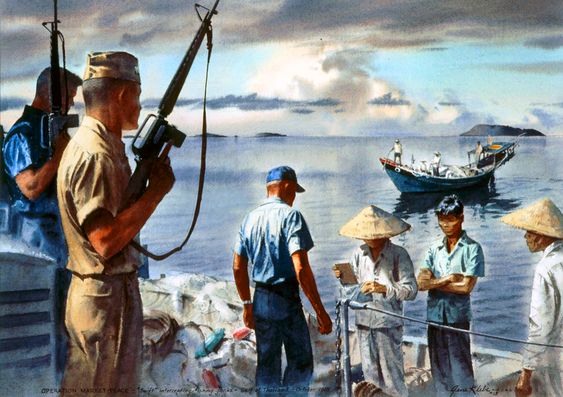
GET UP AND GET IT DONE – Motivational Speech
Beef Pastrami

Ingredients
- 2 tablespoons black peppercorns
- 1 tablespoon + 2 teaspoons dried thyme
- 6 bay leaves, crumbled
- 2 teaspoons whole juniper berries, + 1/3 cup crushed juniper
- 6 cups water
- 3/4 cup packed light brown sugar
- 3/4 cup kosher salt
- 1 beef brisket (about 4 to 5 pounds)
- 2/3 cup coarsely ground black pepper
Instructions
- In a small mixing bowl, combine the peppercorns, thyme, bay leaves, cloves, garlic and whole juniper berries.
- In a saucepan, over medium heat, combine the water, brown sugar and salt. Bring to a boil and stir to dissolve the sugar and salt. Remove from heat and add dry spice mixture and steep for 1 hour.
- Place the brisket in a glass or plastic container. Pour the seasoned brine to cover the brisket completely. Cover and refrigerate for 3 weeks, turning the brisket every couple of days.
- Heat the smoker.
- Combine the crushed juniper berries and ground black pepper in a small bowl. Using the palm and heel of your hand, press two thirds of the berries and pepper mixture into the brisket. Press the remaining mixture into the other side. Place the brisket in a smoker and smoke for about 4 hours.
- Remove from the smoker and cool for 30 minutes.
- Place the brisket in a large Dutch oven, cover with water and place over medium heat. Bring the liquid to a boil, reduce to a simmer and cook for 2 hours.
- Remove from pan and cool completely.
- Slice into thin slices and serve.
What battles in history were won because one side did something so unthinkable that it caught their opponent completely by surprise?
Imagine you have an army and you’re out of supplies. Like, if you sit there for a few more days, your men will start to starve. That’s how bad it is. You’re also not getting resupplied any time soon because the enemy navy is blocking your sea routes and the enemy army is blocking your land routes. Your only way to survive is to beat the enemy army in a head-on battle.
But there’s just one problem: the enemy army is twice as large as your own. And is led by one of the greatest living generals.
How do you win the battle?
This was the situation Julius Caesar faced in the late summer of 48 BCE. He had made a gambit, attempting to cross the Adriatic in late fall in risky waters, but he only made it across with half of his army and was promptly outmaneuvered by his opponent Pompey’s larger army. Near the town of Pharsalus, he found himself outnumbered, outmatched, and even outplanned. Pompey held all the cards.
Pompey’s associates, who included most of Rome’s Senators, urged him to battle. He himself wanted to stay up on his hill and starve Caesar out, but he was pressured into a confrontation. He obliged.
As Pompey’s army marched out, it must have been an intimidating sight for Caesar. He had faced down larger armies before, but they had always been armies of Gauls, undisciplined warriors without much organization on the battlefield. Facing him now were trained Roman soldiers led by a commander with decades of experience in field battles. Caesar must have come to terms with the idea that this would be his last battle.
The two armies lined up. Pompey had the tactical flexibility to either stack his units tightly to create more breakthrough pressure or to extend his line and outflank Caesar. He opted for the former, matching Caesar’s line in length and seeking to penetrate. Caesar had no choice but to attack.
In most battles, the attack would begin with a slow walk, accelerating to a brisk stride and eventually a full jog that would create momentum for the strike. However, Caesar knew that his momentum was not enough for Pompey’s deep ranks. He took advantage of his soldiers’ coordination and discipline; ten meters before making contact, he ordered a full-stop halt to the entire line. After a brief rest to recover from the initial run, they advanced slowly, shields braced, into the fray.
The infantry combat devolved into a stalemate. Pompey’s lines had more weight, but Caesar’s soldiers were veterans who had fought with Caesar for a decade. They had bore powerful charges with more fervor from Gauls before, and they could handle slow, grinding formation fighting just fine despite being outnumbered.
For Caesar, the problem would be the cavalry.
Pompey was dominant in cavalry. Caesar had some Gallic auxiliary horsemen, but Pompey, with all the resources of Greece and the rest of the Roman east, had amassed Macedonian-style cavalry in the thousands. They outnumbered Caesar’s cavalry at least five-to-one, and when they charged, it was a sure thing they would crush Caesar’s flank and bring a quick end to the battle.
Finally, around the peak of the fighting, Pompey’s cavalry charged. Thousands of hooves on the ground, kicking up dust and producing a terrifying low rumble that drew closer and closer to Caesar’s cavalry. They stood still, awaiting the charge. It looked like suicide, a last stand.
At the last moment, they raised their spears. It was a death wish. Pompey’s cavalry made contact.
Immediately, Caesar’s cavalry turned around and fell back. Pompey’s cavalry followed in hot pursuit. But suddenly, Caesar’s cavalry units began splitting off into two groups. They each moved to one side.
Taking their place were a unit of legionaries. Armed with spears.
Pompey’s cavalry were not prepared for this reserve unit of infantry, especially not ones using spears. Turns out their spears were actually just improvised pila: heavy throwing javelins repurposed as anti-horse weapons. But against an unexpected enemy whose momentum became kryptonite, they worked perfectly.
Horses and riders fell, impaled by the spears. Others were struck in the back by pila as they turned tail to flee. The charge broke into a chaotic mess, and the Caesarians were getting the better of the melee fighting on foot. Finally, the Roman cavalry came back for their charge, making contact with the broken Pompeian formation and utterly scattering it. The Pompeian horsemen fled off the battlefield in disarray.
Now it was Pompey’s flank that was in grave danger.
Pompey did not expect that the Roman cavalry would be coming back from their death stand. He was completely unprepared to see a mix of cavalry and infantry barreling toward his left flank. The infantry were equally unprepared and failed to meet the charge properly. Their tightly packed lines were crushed even closer together.
Caesar took advantage of this disorder from every angle. He knew a river protected the left side of the battlefield, so he diverted the rest of his reserves to the Pompeian left flank and sent them on a crushing push through their lines.
The Pompeians folded. 40,000 men lost to 22,000 men on a flat plain with only one little trick.
Julius Caesar would go on to defeat all challengers, becoming the dictator-for-life of Rome.
Then he got stabbed. Sadge
China does not reveal its true military capability (following the principles of Sun Tzu).
Western intelligence can only guess at China’s real nuclear capability. At present, their guess is that China has 350 nuclear weapons and 90 ICBMs.
However, many netizens have studied this question in great detail and their estimates are much higher. Their consensus is that China may have 800 nuclear weapons, and possibly as many as 2,000, including the delivery vehicles for all of them.
Bottom line? We just don’t know.
This uncertainty is what China aims for. It must keep US military planners up at night.
Suppose China does have 800 nuclear weapons. Suppose China has the delivery vehicles for all of them. What does this mean for the United States?
America’s missile defence shield is unproven in the field. However, it has been tested, and recent tests show less than 60% effectiveness. That means 40% of China’s nukes could slip through US defences.
So how much damage could 320 nukes do to America? Well, it would certainly flatten America. It would kill many tens of millions of people, perhaps over a hundred million.
It would wipe out America’s industrial and technological base.
It would create millions of square kilometers of radioactive wasteland that are uninhabitable for centuries.
How could America feed its remaining population? Radioactive land is not arable.
And let’s not overlook the possibility of nuclear winter.
If this is anybody’s idea of survivability, they’re welcome to it.
Never Underestimate China’s Ability to Do the Unexpected
Nothingness.
Submitted into Contest #8 in response to: Write a story about an adventure in space. … view prompt
Jaylen Hyden
“Wha -Charlie! I told you not to scare me like that!” the older girl squeaks, a squeezed smirk scrunching up her face subtly.
Charlie replies with a toothy, smug smile, only patting her sister again on the shoulder, albeit a bit more delicate this time.
“You know I couldn’t miss an opportunity like that!” charlie defends, crossing her arms while continuing to wear the same smirk. Her sister rolls her eyes, and finally chuckles along.
“So you finally decided to come out of your hole, huh?” Her sister nudges charlies side with her elbow, a friendly gesture. Charlie’s body tenses slightly, she really wishes she didn’t have to. She would rather be anywhere else then on this godforsaken ship, but she never really had a choice.
“You would do the same if you were the one in charge of making sure this tin can doesn’t blow up!”
“guess I can’t argue with that.”
“See, I told you. Now how is the data coming along?” charlie glances over at the clock hung up on the wall; god, it was already almost 2am. She doesn’t want to be here.
“Got two more potential sites we could look into, nothing special though.” her sister shrugs.
“Are they actually habitable this time?” charlie mutters under her breath. She feels like she’s already said this before, like this whole thing has happened before.
“Yeah yeah,” her sister waves a dismissive hand in the other direction “no more acidic deposits or whatever.” charlie snorts at the response. But it’s mostly out of reflex. She can’t wait to get back to her room at this point.
“Can’t say people would be too happy if the equivalent of an acid volcano blew up their home.”
She jokes back, forcing her face into a smile.
“It sounded like it would be a ‘them’ problem at the time, not a ‘me’ problem.” her sister jokes.
“Whatever you say, rose.” she rolls her eyes, until settling her gaze on the screen of glass on the other side of the room. Her face scrunches up as she easily abandons the shallow conversation, instead making her way across said room; something twisting uneasily in her stomach the same way her awe of the stars did with her lungs.
“Where do you think you’re going, i’m not done with you yet!” Rose calls after her, a smile still strewn on the taller girls face, while her sister ignores her.
Charlie stops a few steps short of the glass, and places a delicate hand on its surface, her eyes squinting into the nothingness.
“Uh, rose?” she finally responds to her, calling out to her sister as her other crew peers start to glance over curiously, and then follow up with an array of different sounds of sudden panic.
“I’m coming i’m com-” she stops short behind the shorter girl, mouth slightly agape.
“Rose, what is-
“What the hell is that thing?!” a sudden shriek arises from the room in the back, cutting charlie off from trying to reason out what she’s currently seeing in front of her. Something in her memory seems to click, but she doesn’t know why.
Something blacker than the abyss stares back at them, long, lithe tendrils slowly curling in and out from around it as it continues to approach the ship.
Somebody in the crowd begins to scream, and soon the whole ship is riddled with fear and panic as everyone seemingly begins to scramble. Crowds of people trampling over each other through the small door frames on either side of the commons.
She should be running with them, screaming in terror and ripping her hand away from the glass. But instead she can only stand still as her sister tries to drag her deeper into the false security of their ships from the lurking leviathan in the void.
She’s just so tired. And she just wants to go back home.
Maybe space wouldn’t be that cold after all?
She can hear her sisters voice behind her, muffled but just as grating to her ears. She stares out of the window, glazed over eyes watching the creature sulk closer.
She can finally go home.



Thanks for this Intentions update, Metallicman. One question popped up for me, when you begin a new Intentions Campaign, are they all completely new affirmations? That is, do you create new affirmations for each successive campaign and put aside the previous completely? (Just one reading each and that’s it?)
I’ve been under the impression based on your writings that once a particular formula/list has been created, the affirmations stay constant over a period of time (based around the essentials such as health, safety, material well being, etc) and new ones are added/older ones are dropped as time goes on and one’s situation shifts according to the overall design.
But your wording above seems to suggest you created an intention, added it to a new Campaign for 3 months (or whatever it was), and then forgot about it and moved on once that Campaign ended.
Please clarify when you get a chance.
I’ve created a core of key intentions and begin every new Campaign with them, adding new ones and adjustments such as Tell Tails and flags, or more trivial Intentions and adjustments… there have been fast results, especially the tell tails… and definitely overall movement towards my Goals… but if I only need to create and read aloud each intention ONCE for each Campaign as you *seem* to suggest, then I’ve been repeating Intentions and expending time unnecessarily when only one reading would suffice?
Hope that’s clear, as this is important stuff and I’d prefer to be getting it right.
Thanks~
In general, I have a baseline set of affirmations that I reuse in each and every affirmation campaign.
I also add affirmations and delete them as the situation evolves.
I have added affirmation statements that guarantee that I know what affirmations to make and what to say. And this causes a more natural evolution of my campaign. -MM
Understood. Thanks for the clarification. I read you correctly after all, the original Index was/is/always will be super-thorough; but I thought I’d check, just in case.